
Remastered: Old Masters from the Collection of J.E. Safra Part 2
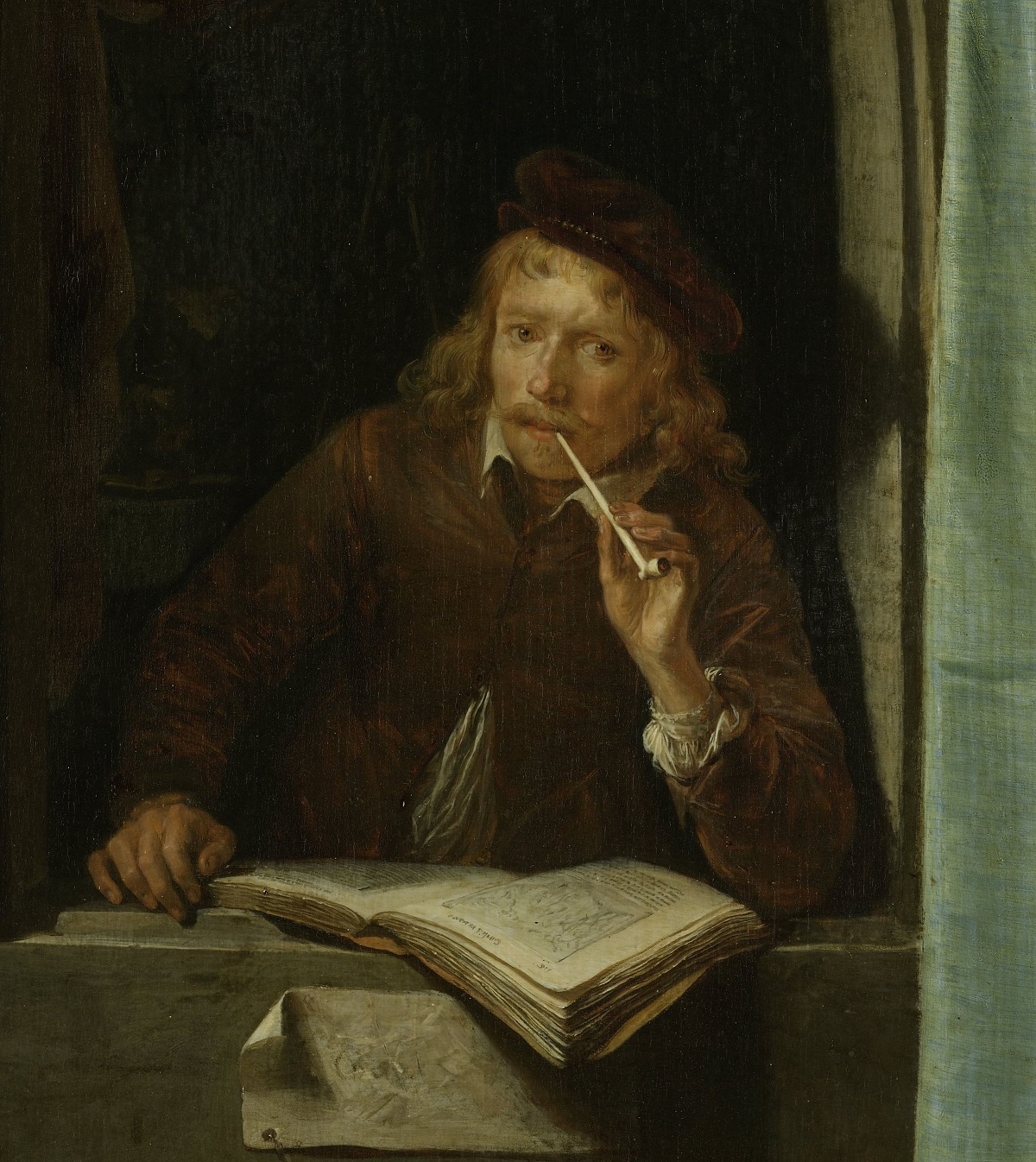
Gerard Dou was a Dutch Golden Age painter, whose small, highly polished paintings are typical of the Leiden fijnschilders. He specialised in genre scenes and is noted for his trompe-l'œil "niche" paintings and candlelit night-scenes with strong chiaroscuro. He was a student of Rembrandt.
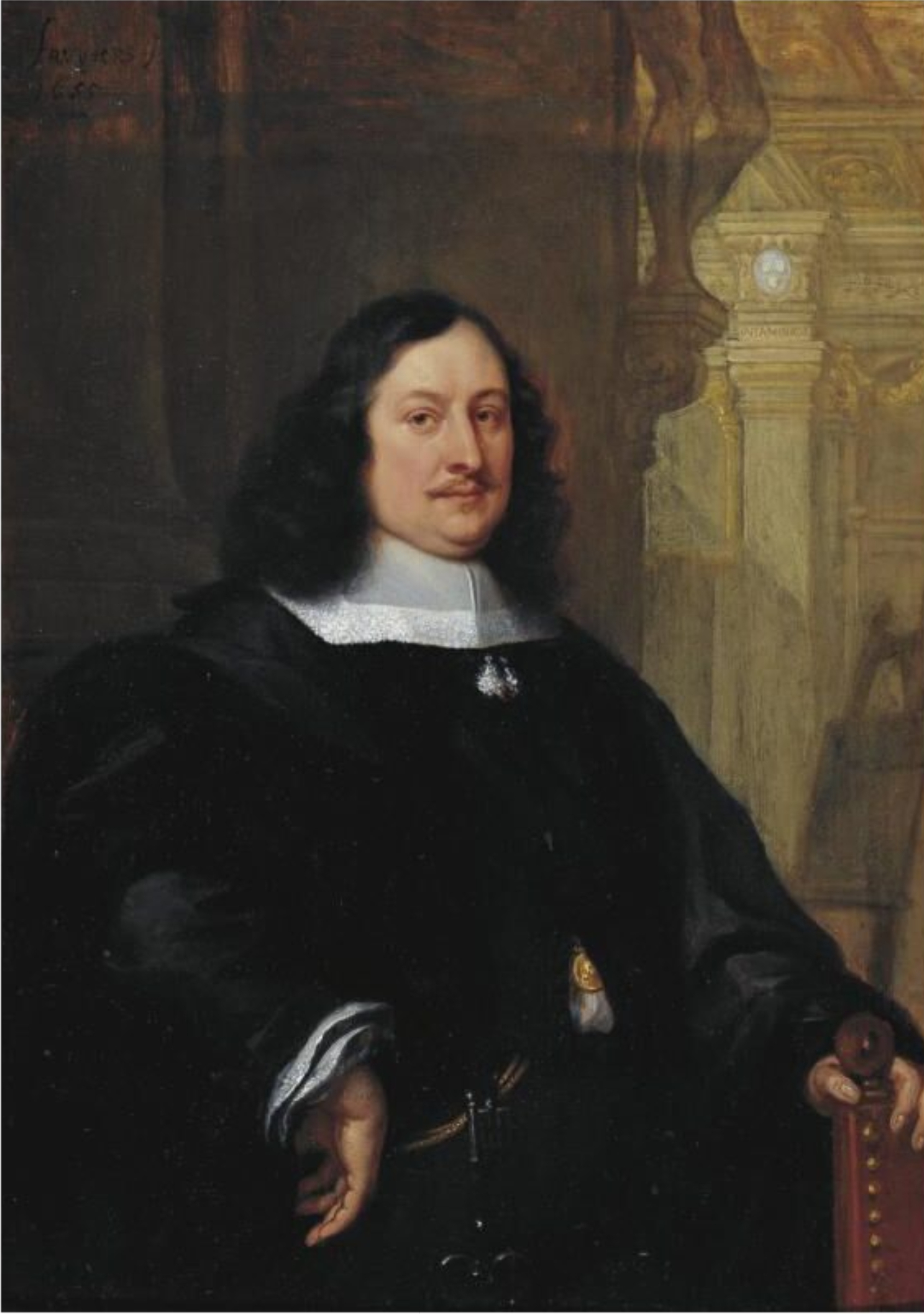
David Teniers the Younger was a Flemish Baroque painter, printmaker, draughtsman, miniaturist painter, staffage painter, copyist and art curator. He was an extremely versatile artist known for his prolific output. He was an innovator in a wide range of genres such as history painting, genre painting, landscape painting, portrait and still life. He is now best remembered as the leading Flemish genre painter of his day. Teniers is particularly known for developing the peasant genre, the tavern scene, pictures of collections and scenes with alchemists and physicians.
He was court painter and the curator of the collection of Archduke Leopold Wilhelm, the art-loving Governor General of the Habsburg Netherlands. He created a printed catalogue of the collections of the Archduke. He was the founder of the Antwerp Academy, where young artists were trained to draw and sculpt in the hope of reviving Flemish art after its decline following the death of the leading Flemish artists Rubens and Anthony van Dyck in the early 1640s. He influenced the next generation of Northern genre painters as well as French Rococo painters such as Antoine Watteau.

Eglon Hendrick van der Neer was a Dutch painter of the Dutch Golden Age, son of the painter Art van der Neer.
Eglon van der Neer was a master of historical scenes, portraits of nobles and scenes from their lives. He also painted landscapes and genre scenes.
In Brussels he was a painter at the court of King Charles II.
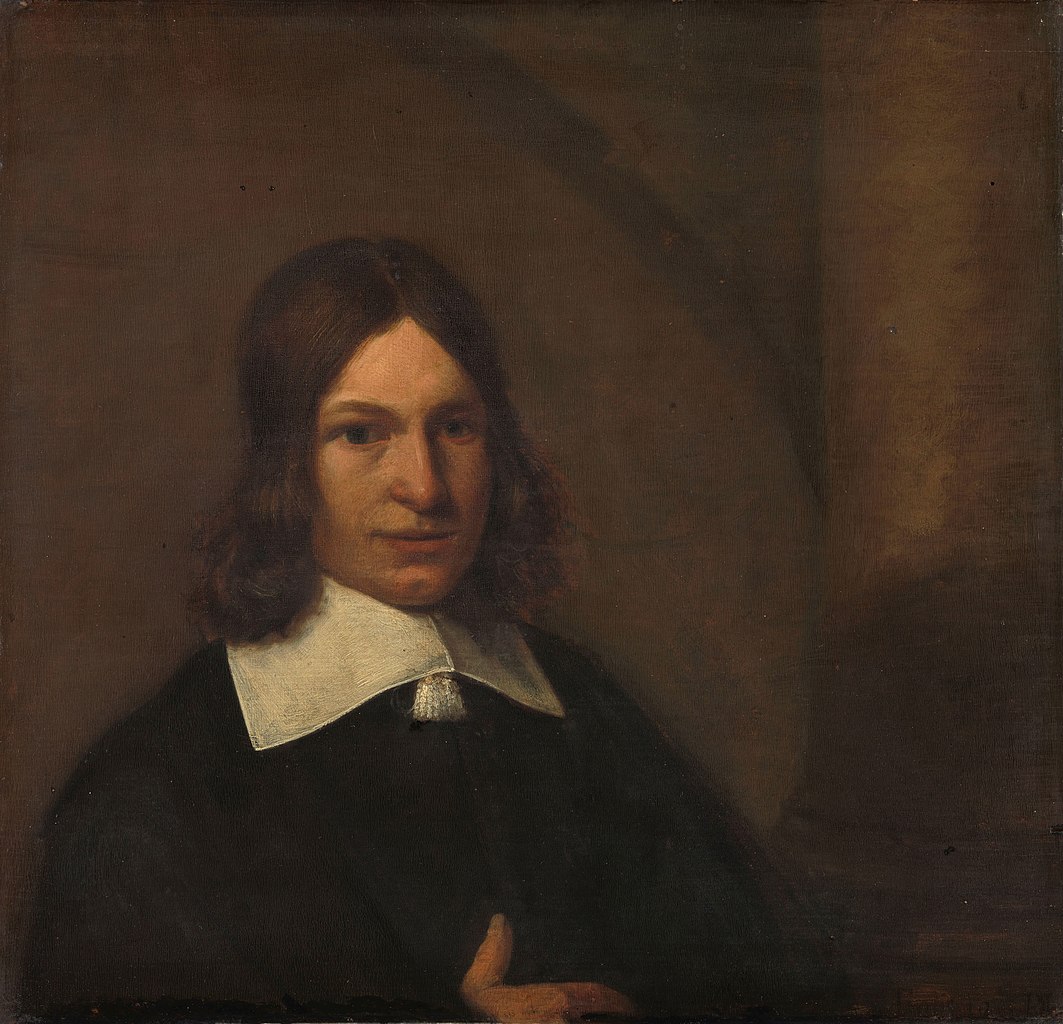
Pieter de Hooch was a Dutch Golden Age painter famous for his genre works of quiet domestic scenes with an open doorway. He was a contemporary of Jan Vermeer in the Delft Guild of St. Luke, with whom his work shares themes and style.
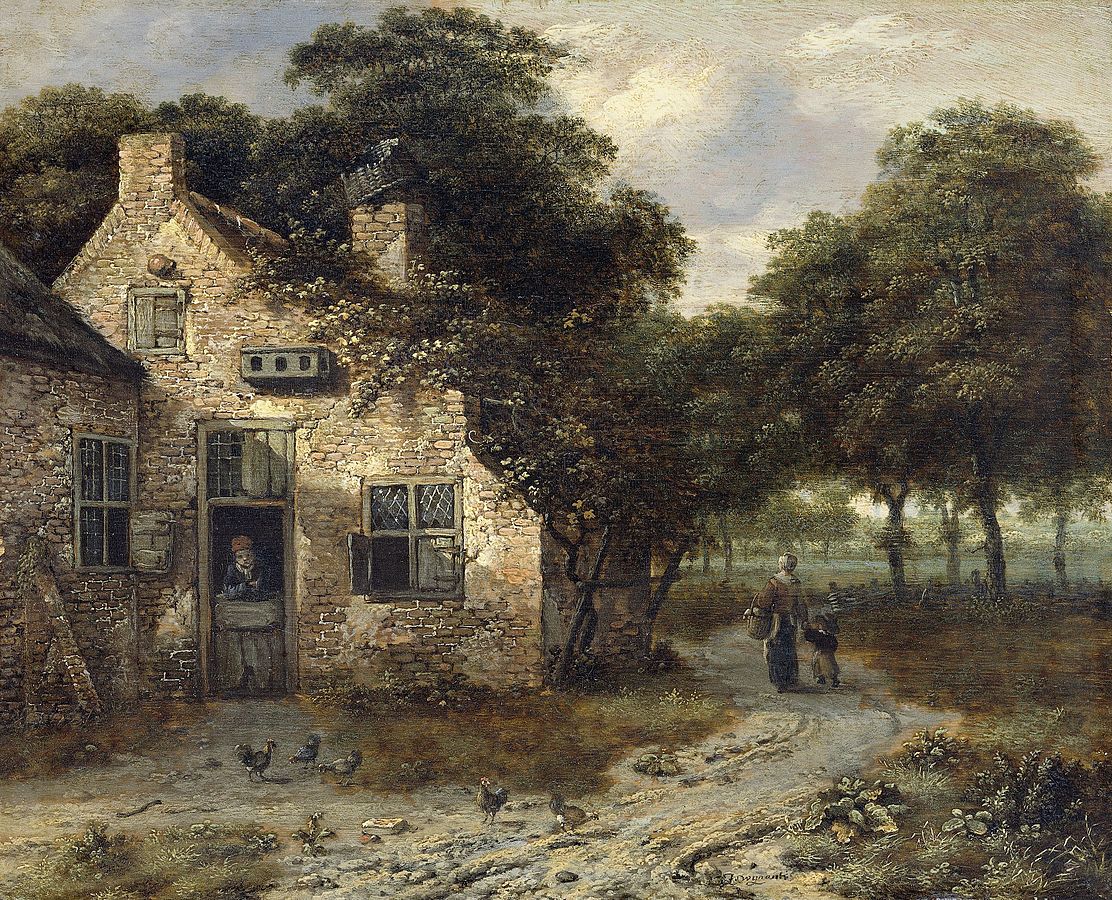
Jan Jansz Wijnants was a Dutch Golden Age painter.
Wijnants is primarily known for his Italianate landscapes and paintings featuring topography. The painters Nicolaes de Vree and Adriaen van de Velde trained in his studio and his style later had influence on the English artist, Thomas Gainsborough, the German artist Wilhelm von Kobell, and the Dutch artists Anthonie van Borssom and Willem Buytewech.
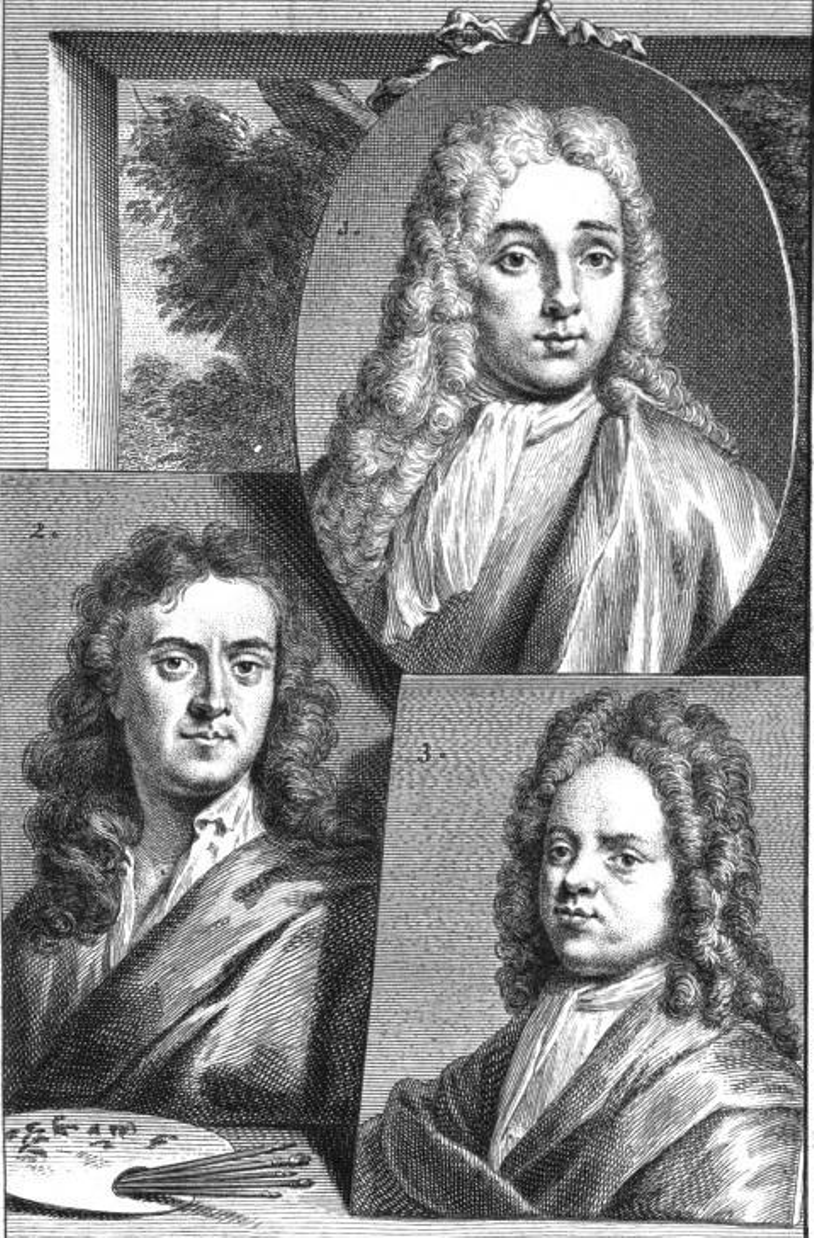
Jan Weenix was a Dutch painter of the Golden Age and a member of the Guild of St. Luke in Utrecht.
He received his first painting lessons from his father Jan Baptist Weenix and later perfected his art. Jan Weenix is known for still lifes with game, hunting scenes, he painted landscapes and portraits, genre paintings, and created decorative panels. Among the customers of his works was also Tsar Peter I.
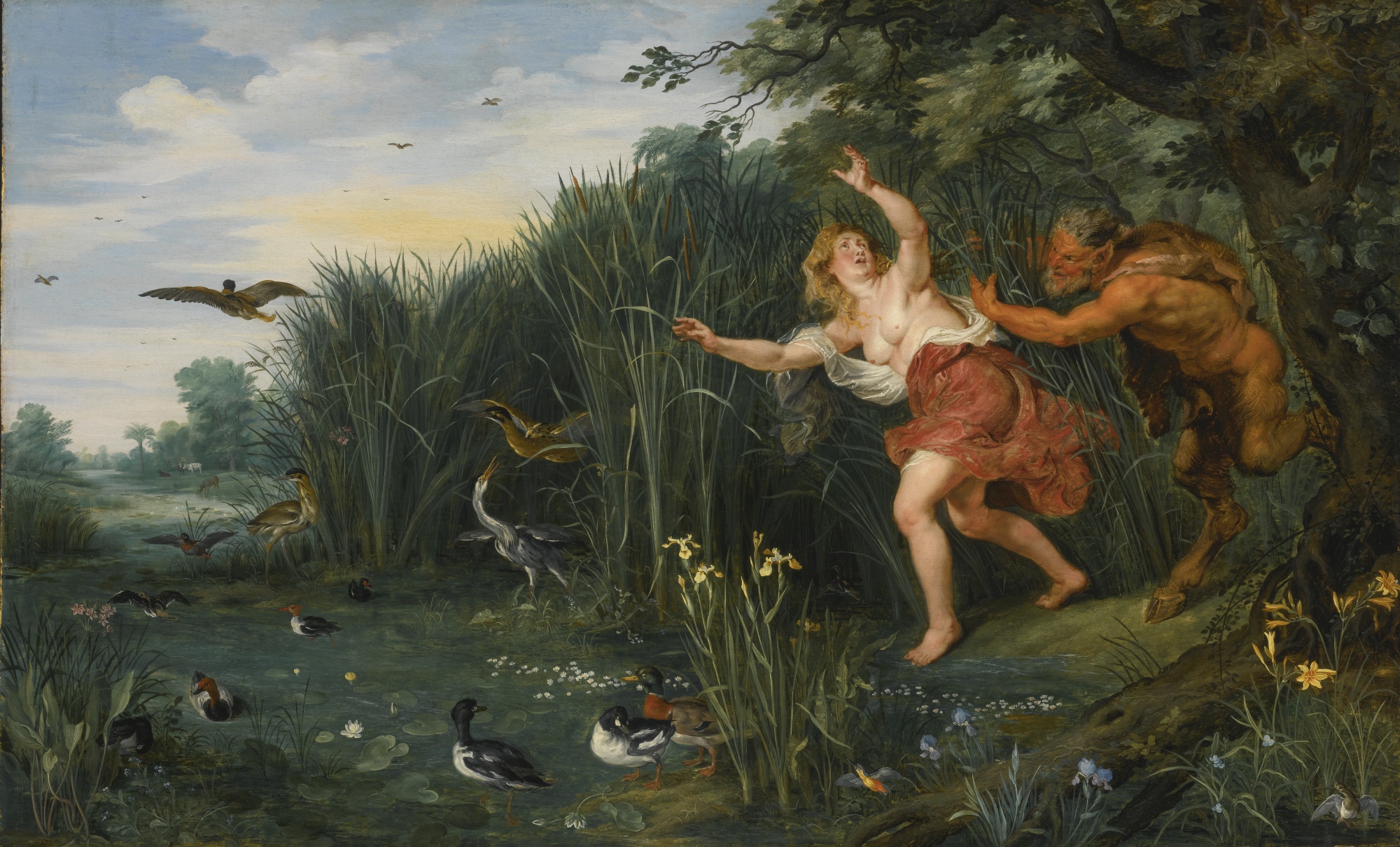
Jan Bruegel the Younger was a Flemish Baroque painter. He was the son of Jan Brueghel the Elder, and grandson of Pieter Bruegel the Elder, both prominent painters who contributed respectively to the development of Renaissance and Baroque painting in the Habsburg Netherlands. Taking over his father's workshop at an early age, he painted the same subjects as his father in a style which was similar to that of his father. He regularly collaborated with leading Flemish painters of his time.
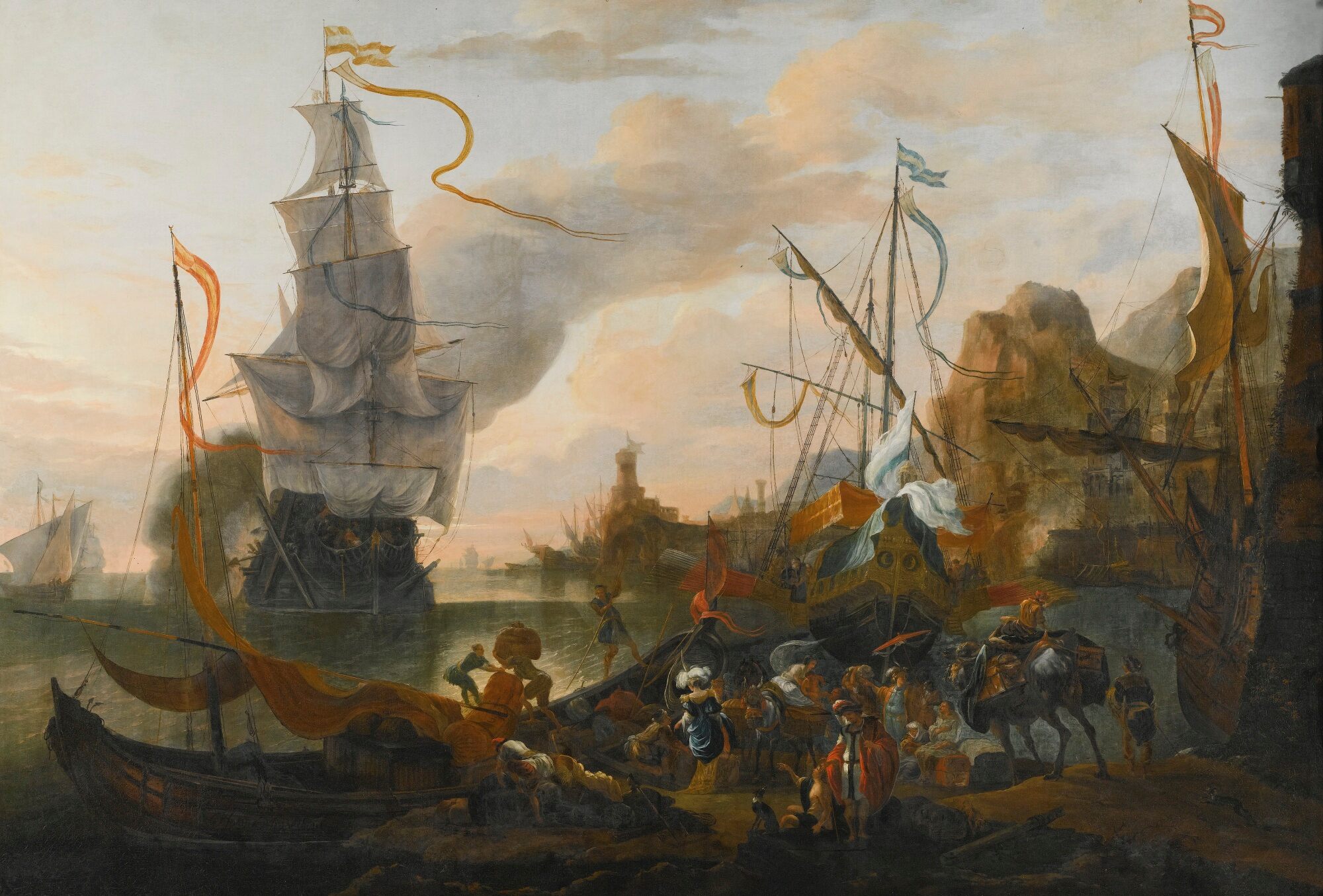
Hendrik van Minderhout was a Dutch marine painter and member of the Guild of St. Luke.
He worked mainly in the Flemish cities of Bruges and Antwerp and painted landscapes, sea paintings, cityscapes, and architectural paintings.
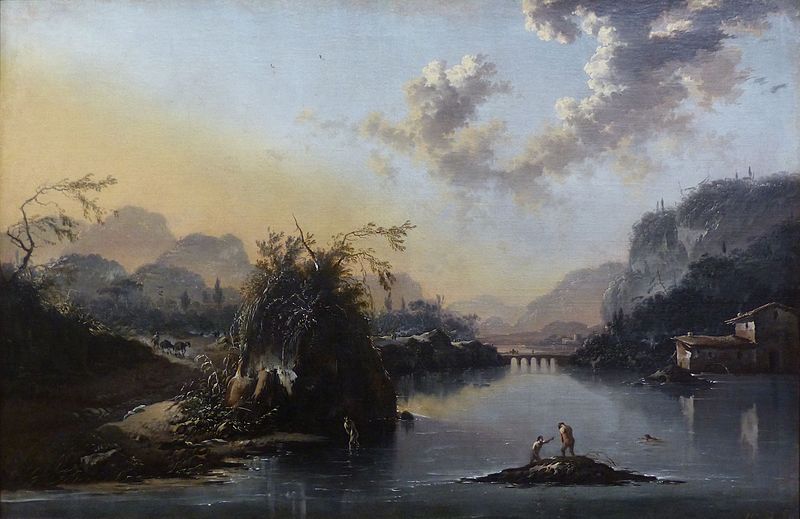
Hans De Jode was a Dutch marine painter of the Golden Age.
The theme of his work is related to the sea: he painted harbor scenes, bathers in bays, ships on a wharf, and Italian landscapes. The artist mainly lived and worked in Venice and Vienna.
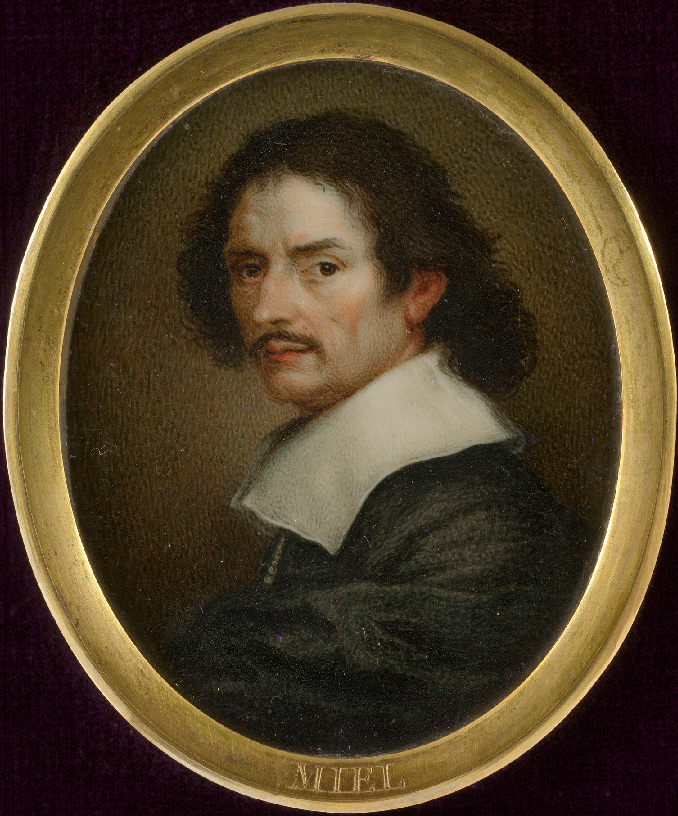
Jan Miel was a Flemish painter and printmaker who worked in Italy.
As a young man Miel worked in the Bamboschade genre: his paintings depict dancing villagers, gamblers and charlatans, barbers and shoemakers, traveling musicians and actors.
Miele diversified the genre painting of the time with carnival scenes. Miele also executed several frescoes in Roman churches, decorated the Quirinale Palace, and was court painter to the Duke of Savoy. Later he moved away from genre painting and painted historical subjects in the classical style.
Miele's works are kept in many museums in Europe and the United States, several of them in the Hermitage.
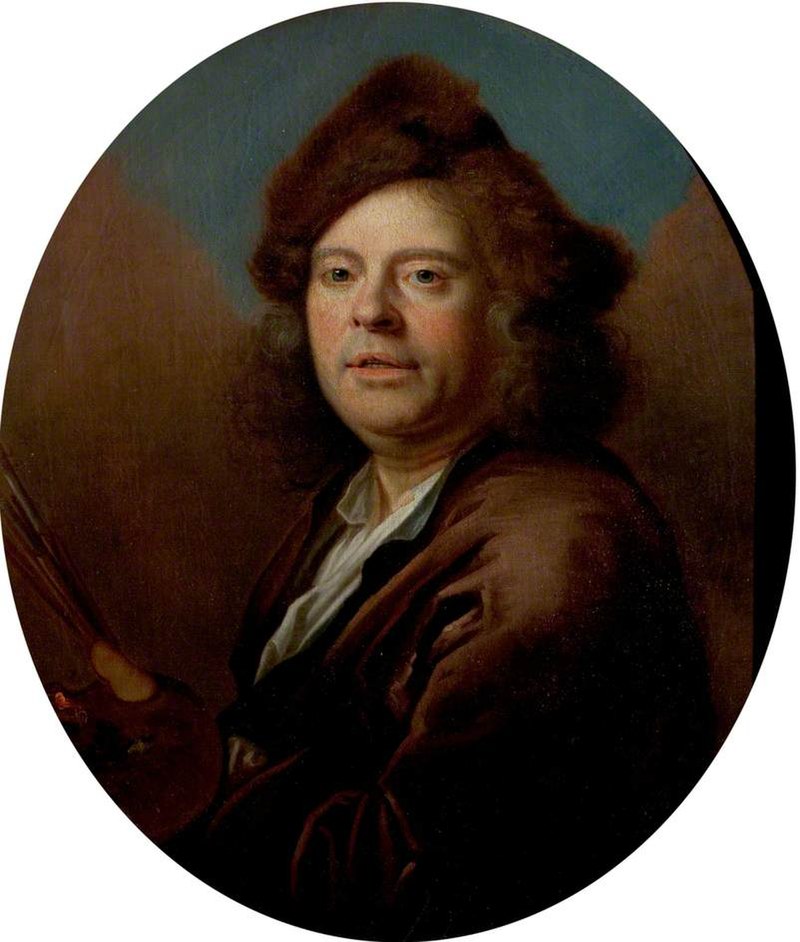
Jan Siberechts was a Flemish landscape painter whose career spanned both his native land and England. Initially, Siberechts developed a personal style of landscape painting in Antwerp, emphasizing Flemish countryside and country life. His work was influenced by Dutch Italianate landscape painters such as Nicolaes Berchem and Karel Dujardin, reflecting a blend of local and Italianate elements. This phase of his career was marked by vivid depictions of the Flemish rural life, with robust country girls in bright attire becoming a signature motif of his paintings.
Siberechts moved to England around 1672, where he significantly contributed to the English landscape tradition. In England, he painted decorations for the Duke's Cliveden House and later, traveled extensively, completing commissions for aristocratic clients. His English landscapes maintained their Flemish character but also started to focus more on universal themes, with less emphasis on figures and more on the scenery itself. These works are characterized by powerful trees, soft light on distant hills, and a relatively dark foreground to highlight the illuminated vistas in the background.
Siberechts is credited as the 'father of British landscape' for his pioneering country house portraits, blending detailed naturalistic views of stately homes into atmospheric landscapes. This innovative approach had a lasting influence on English landscape painting. His work, such as the views of Longleat and the Belsize Estate, represents an important step in the development of topographical painting, merging Flemish influences with the emerging English landscape tradition.
For collectors and experts in art and antiques, Siberechts' oeuvre offers a unique window into the transnational flow of artistic ideas in the 17th century, blending Flemish traditions with the nascent English landscape genre. His paintings, celebrated for their detail and historical topographical interest, can be found in prestigious collections such as the Tate Gallery London and the Victoria and Albert Museum.
For updates on exhibitions, sales, and auction events related to Jan Siberechts' work, art enthusiasts are encouraged to sign up for dedicated newsletters. This ensures that they remain informed about the latest opportunities to explore and appreciate the contributions of this influential Flemish artist to the landscape painting genre.
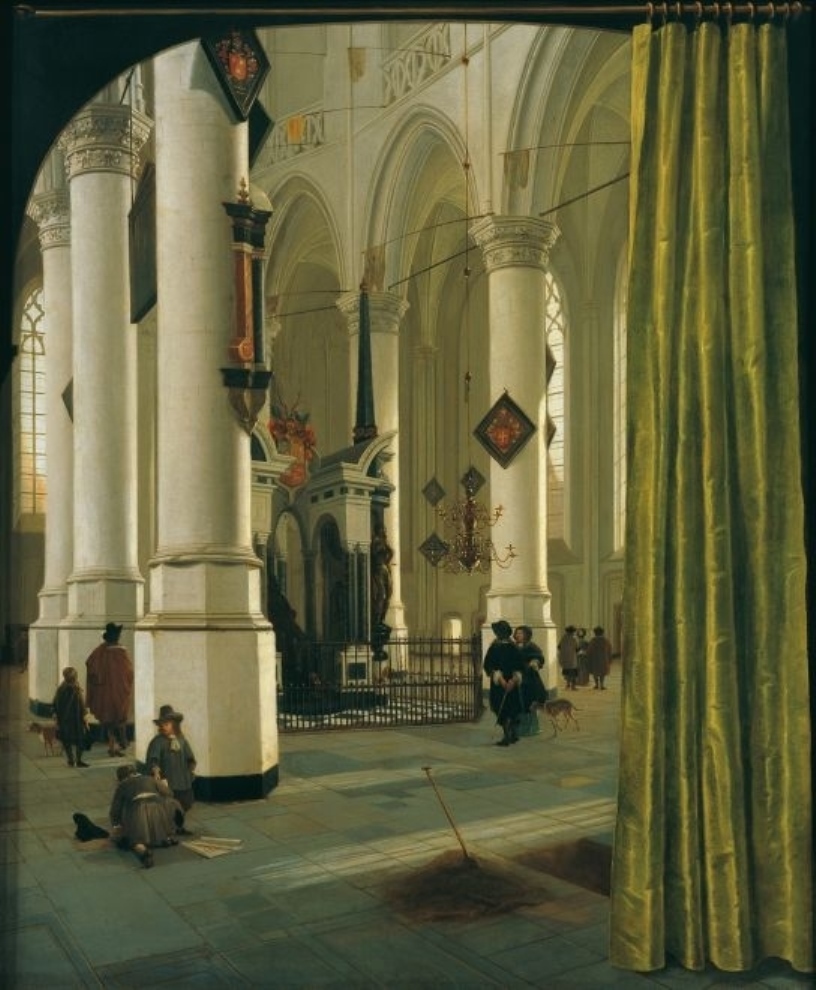
Hendrick Cornelisz. van Vliet was a Dutch painter of the Dutch Golden Age, a member of the Delft Guild of St. Luke, who studied under his uncle, the painter Willem van der Vliet. He painted religious buildings and churches. But van Vliet is best known for his numerous depictions of church interiors, and he was also popular as a portrait painter.

Bernhard Keil was a Danish Baroque painter.
He is considered a pupil of Rembrandt. Keil is known for his lively genre paintings depicting children, he also painted portraits and allegorical paintings.
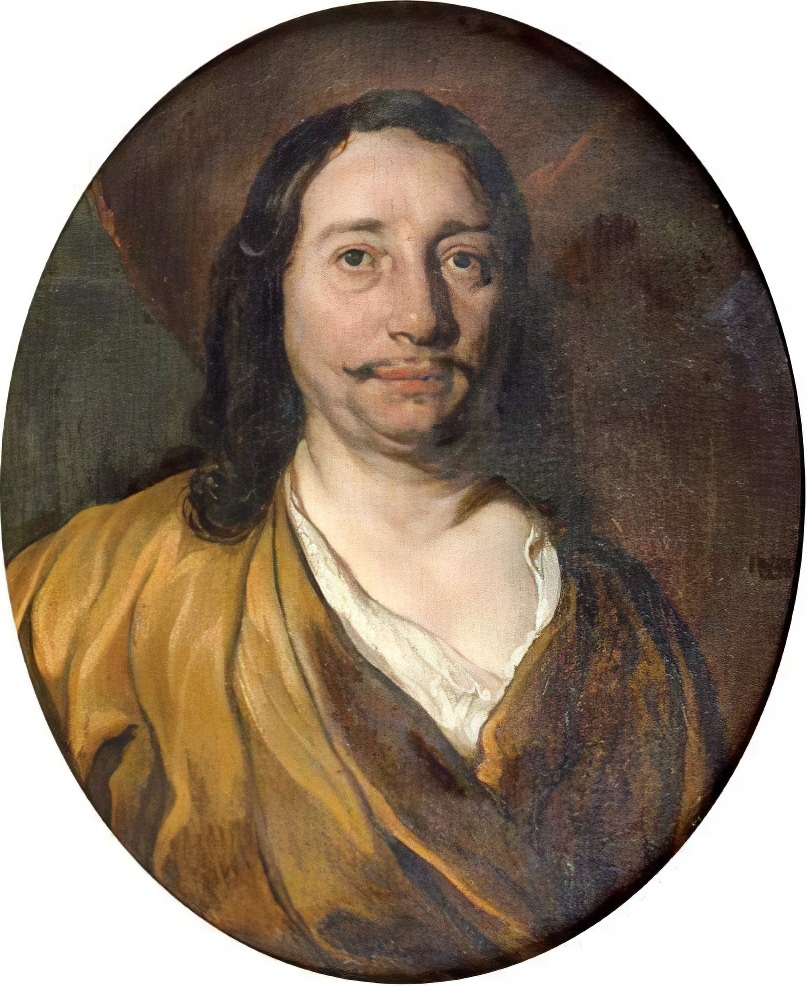
Jan van Noordt was a Dutch portrait painter of the Golden Age of Dutch painting. He is known for his paintings of historical and pastoral scenes as well as portraits, especially of children.
Jan van Nordt originally painted historical works for the free market: biblical and mythological scenes as well as scenes from popular plays of the time. In the late 1650s he began painting portraits by patronage, which allowed him to return to historical painting. During the 1660s his style moved from a dynamic elegance to a mature and rugged manner.
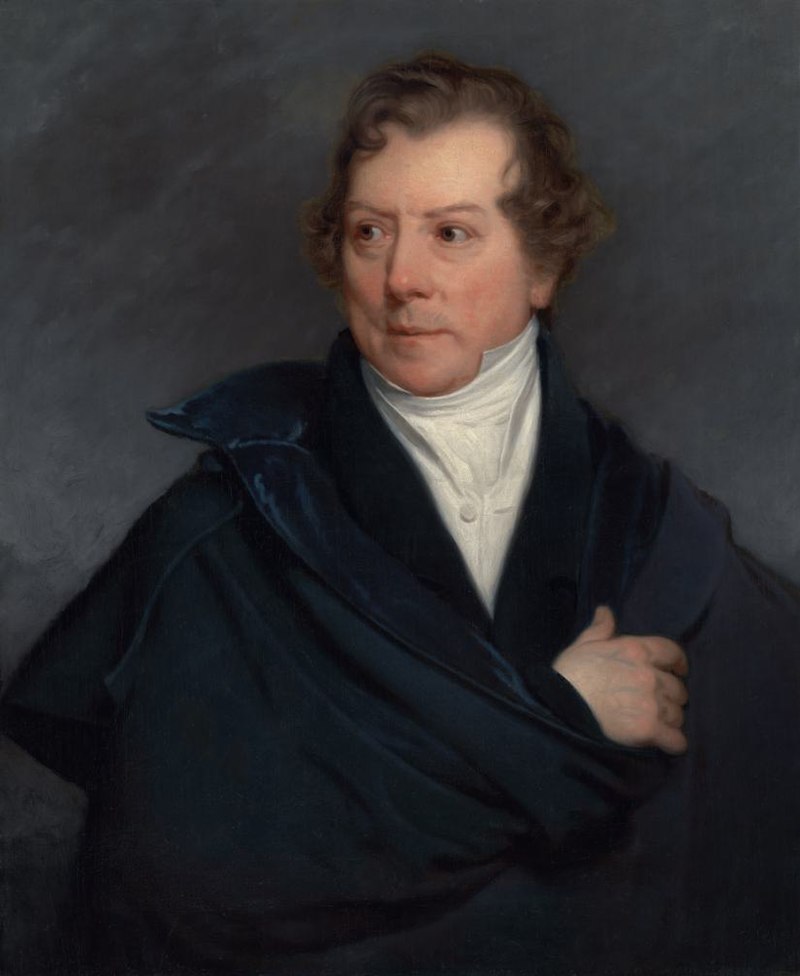
Hendrik Voogd is a Dutch painter and printmaker.
He lived and worked for a long time in Italy, known for his landscapes with lush tree crowns through which the sun's rays tear through. He was obviously interested in the light effects of a sunset or pre-thunder sky. He also depicted grazing cattle in idyllic scenes.
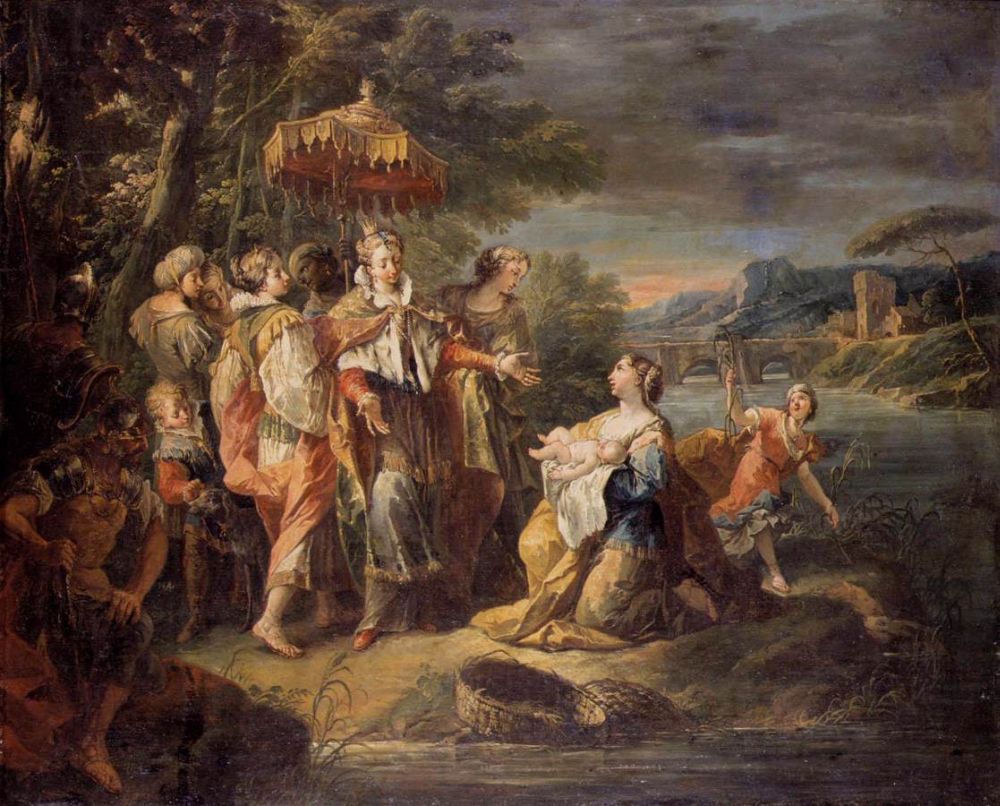
Gaspare Diziani was an Italian late Baroque and early Rococo painter, decorator, draftsman, and engraver.
He painted a series of canvases and murals for churches, and worked as a set designer for theaters and opera houses in Venice, Munich, and Dresden. His engravings illustrate the 1757 edition of The Divine Comedy.
Gaspare Diziani was one of the founders of the Venice Academy of Fine Arts.
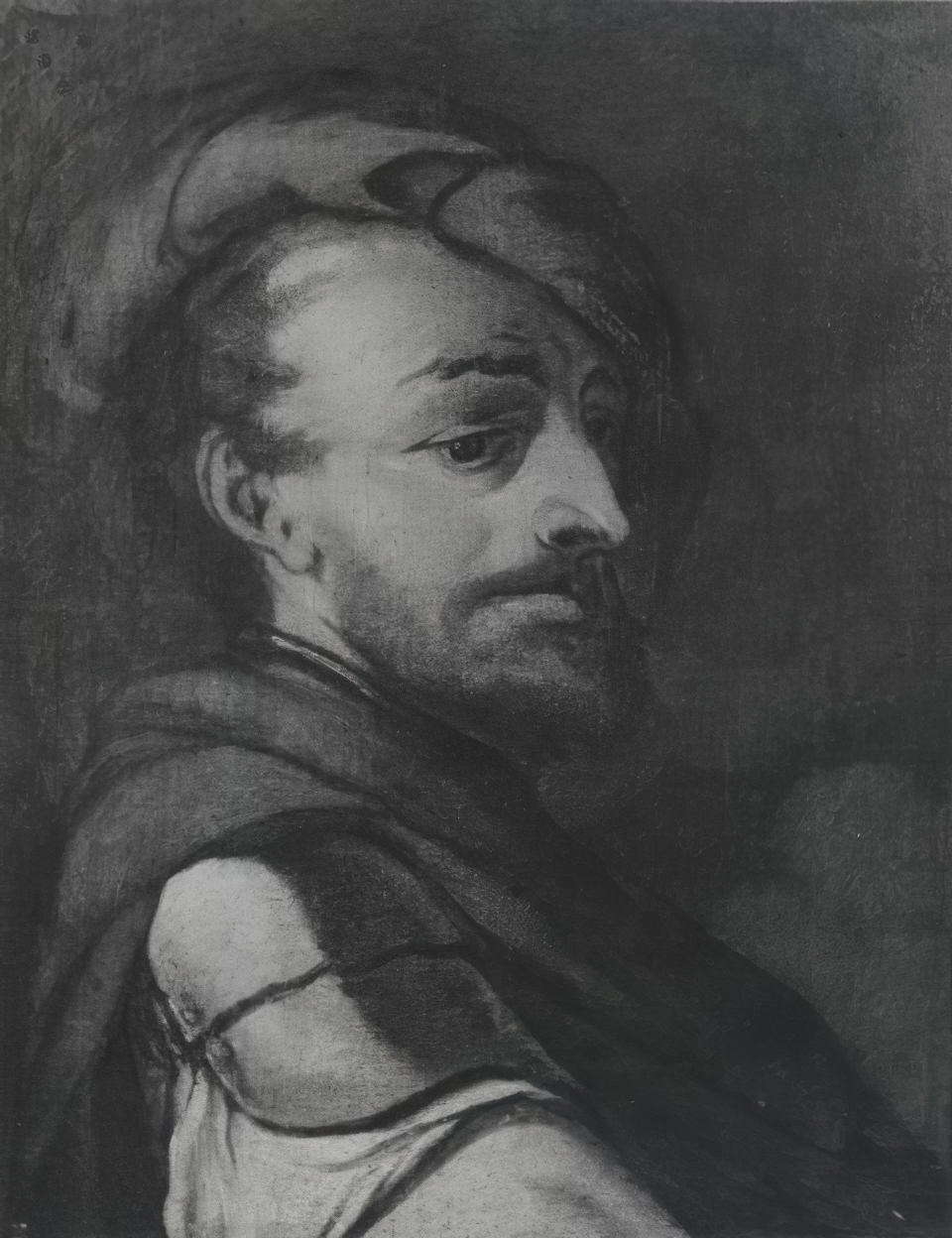
Giulio Carpioni was an Italian Baroque painter, etcher, and a significant figure in the early Baroque period, primarily associated with Venice and Vicenza. His artistic journey began under the mentorship of Alessandro Varotari, known as Il Padovanino. Carpioni's work was influenced by various artists and styles, including the realism and objectivity characteristic of Saraceni and Jean Leclerc, as well as Lombard painting, which he encountered during a trip to Bergamo.
Giulio Carpioni's oeuvre includes a mix of religious and mythological subjects, demonstrating a penchant for narrative and allegory, often depicted with a distinctive graphic line and a warm tonal palette. Noteworthy works include the Apotheosis of the Dolfin family and the Allegory of the Grimani Family, showcasing his ability to blend mythological themes with a vibrant expression of Baroque aesthetics.
His bacchanal scenes, such as the one described in a detailed analysis on the Museo Nacional Thyssen-Bornemisza's website, exhibit his skill in composition and use of color to create dynamic, engaging scenes. Giulio Carpioni's influence extended through his etchings and collaborative works, contributing significantly to the art culture of his time.
For collectors and art enthusiasts interested in Carpioni's work, staying informed about exhibitions, sales, and auctions is essential. Signing up for updates can provide access to the latest information on Giulio Carpioni's pieces, ensuring you don't miss out on new discoveries or opportunities to add to your collection.
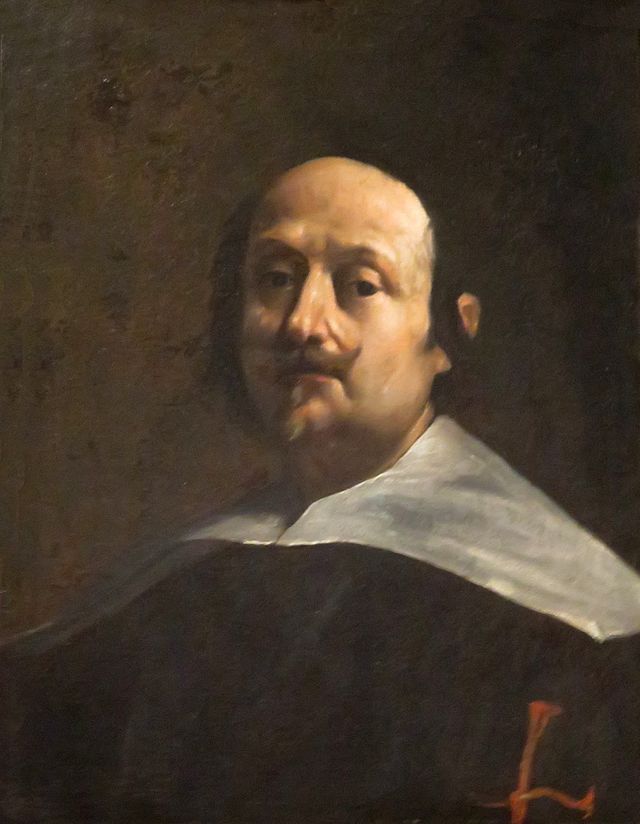
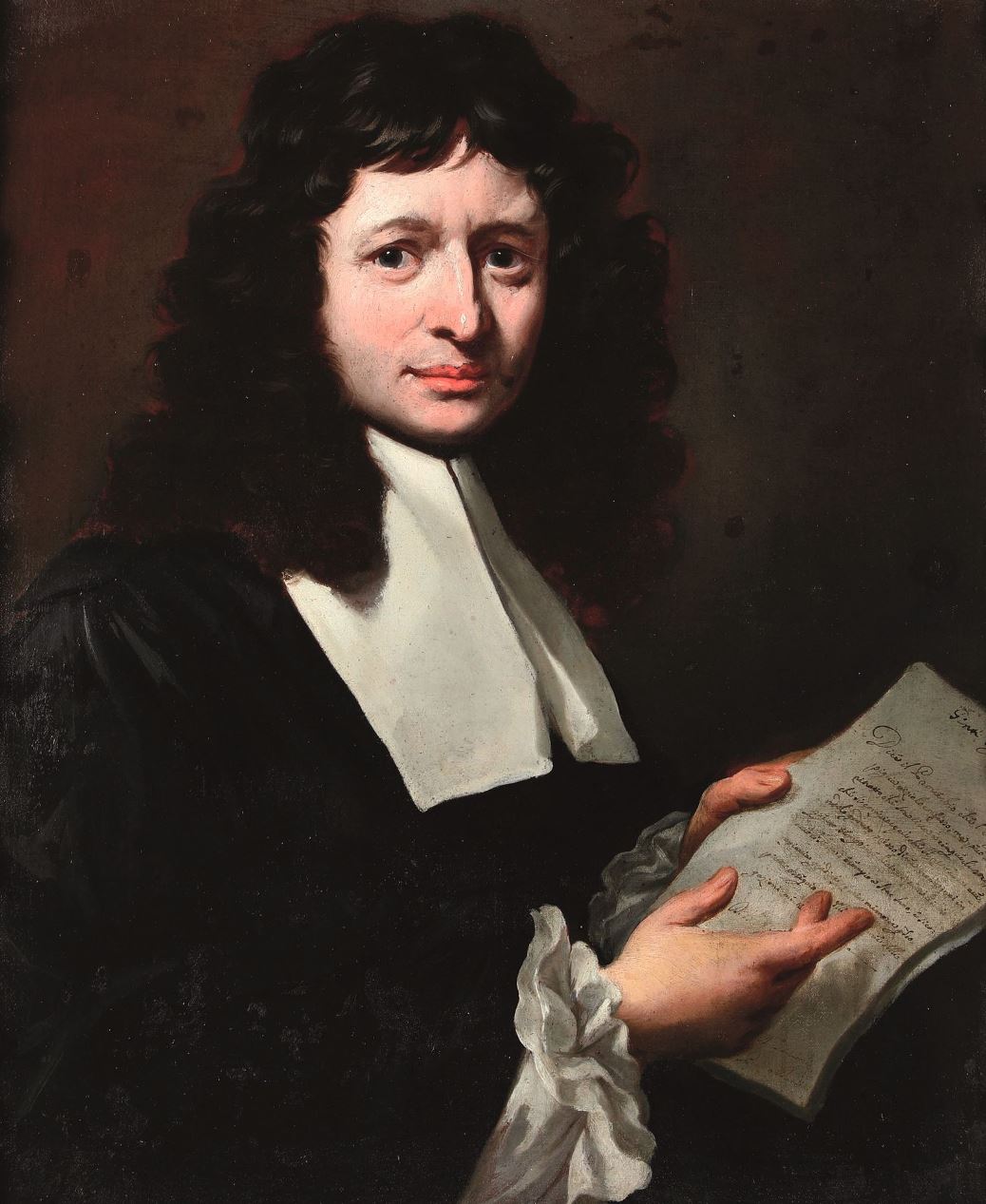
Pier Dandini or Pietro Dandini was an Italian painter of the Baroque period.
He grew up and studied painting with artist relatives and in a creative environment, then worked mainly in Florence. Dandini executed a number of church commissions in Florence and created frescoes for villas of noble citizens. Contemporary critics have admired Dandini's art.
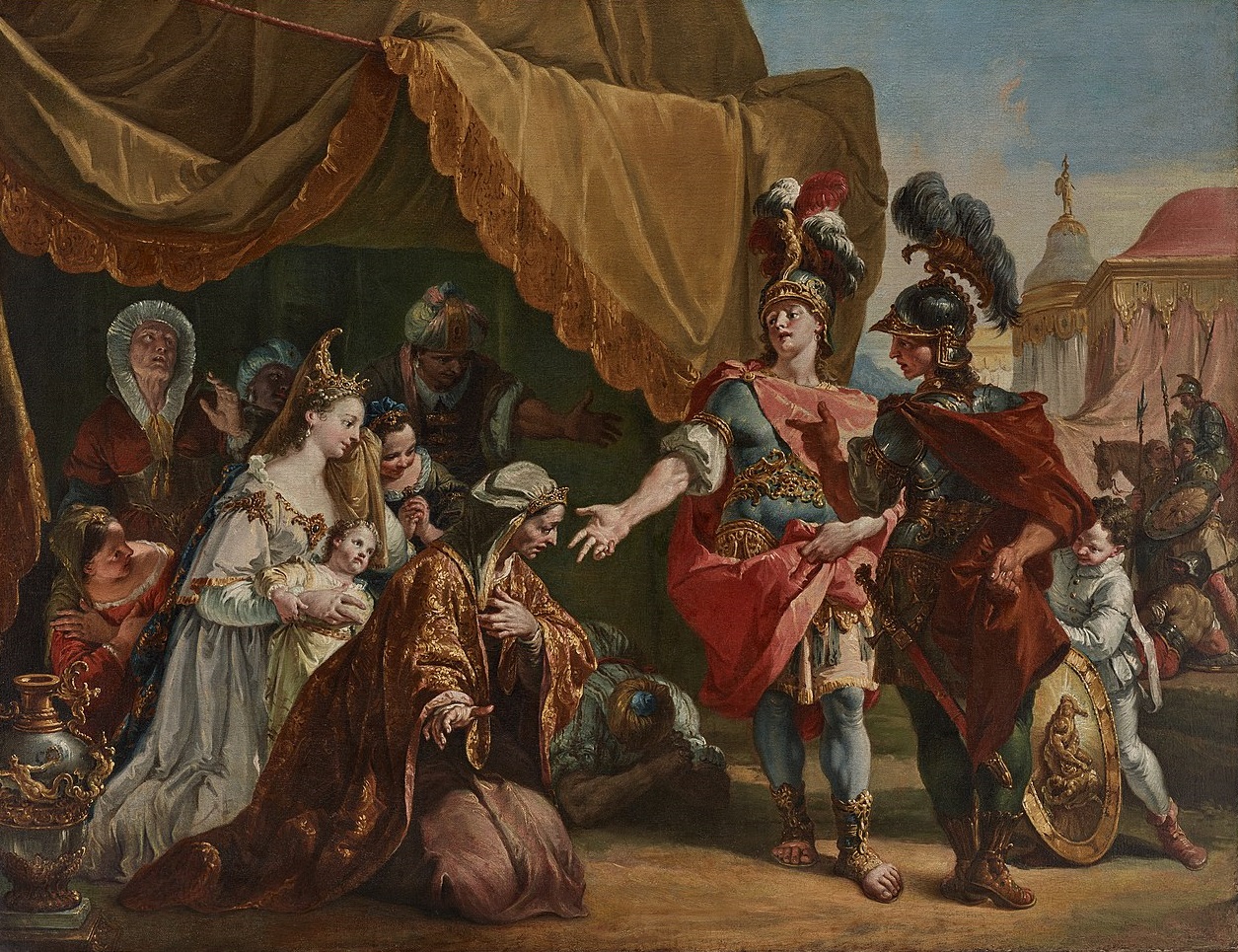
Francesco Fontebasso was an Italian painter of the late-Baroque or Rococo period of Venice. He first apprenticed with Sebastiano Ricci, but was strongly influenced by his contemporary, Giovanni Battista Tiepolo.
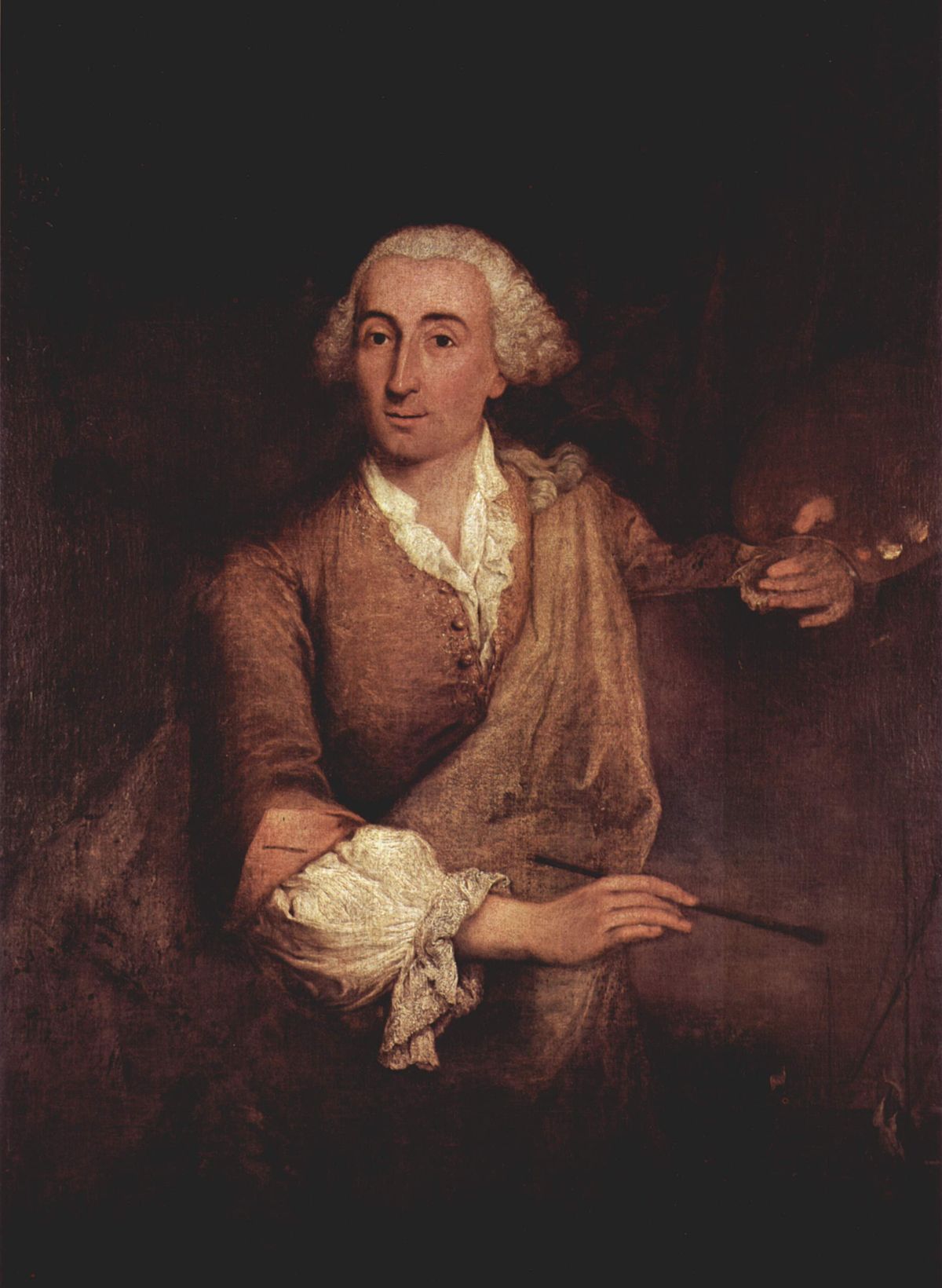
Francesco Lazzaro Guardi was an Italian painter, nobleman, and a member of the Venetian School. He is considered to be among the last practitioners, along with his brothers, of the classic Venetian school of painting.
In the early part of his career he collaborated with his older brother Gian Antonio in the production of religious paintings. After Gian Antonio's death in 1760, Francesco concentrated on vedute. The earliest of these show the influence of Canaletto, but he gradually adopted a looser style characterized by spirited brush-strokes and freely imagined architecture.
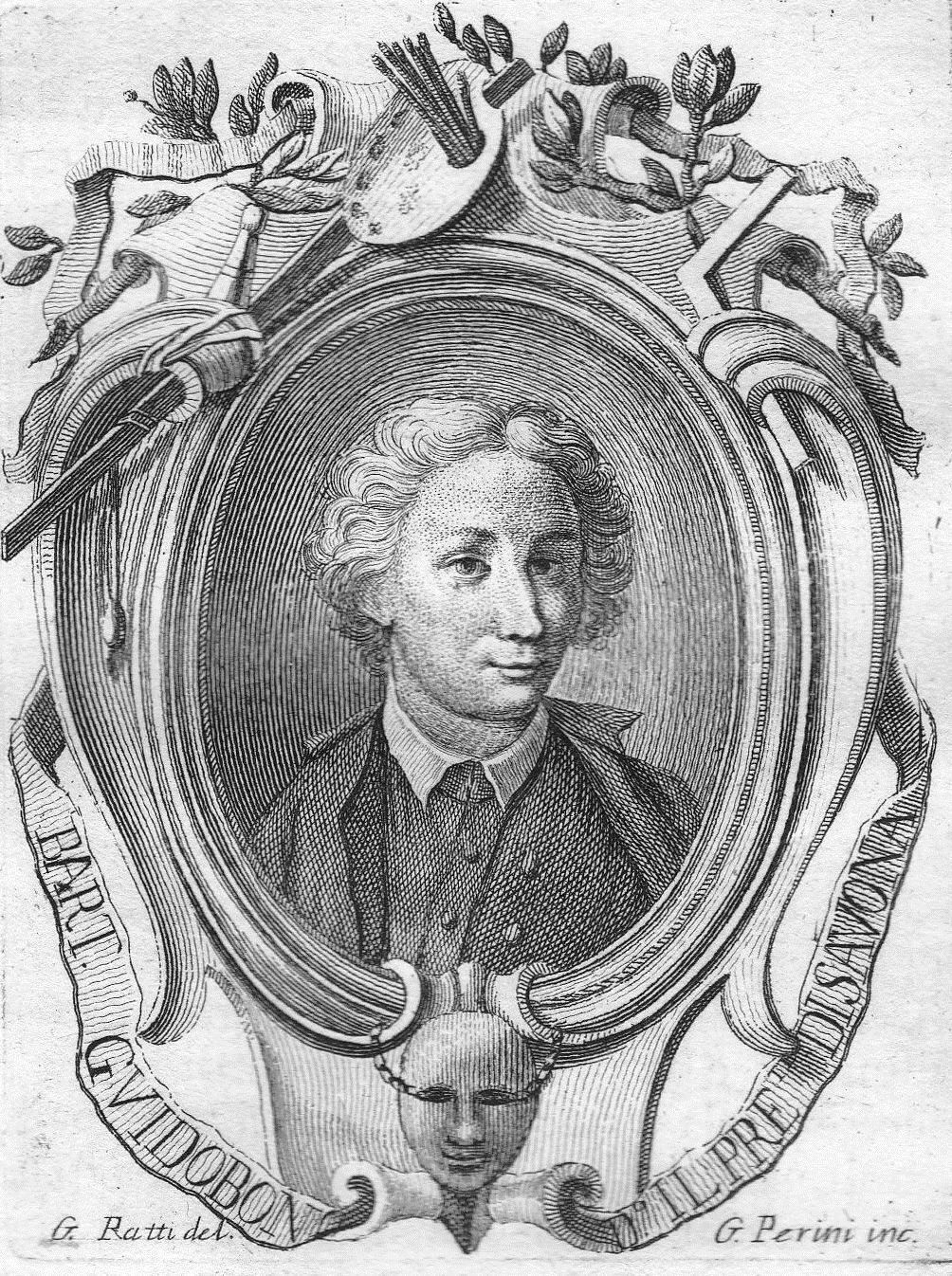
Bartolomeo Guidobono, also known as Prete di Savona, was an Italian Baroque painter.
He was born into a potter's family and learned the basics of ceramics and painting from his father, who worked for the royal palace of Savoy. Guidobono later worked in Parma, Venice and Genoa, painting frescoes and canvases in churches and chapels, as well as in the royal palaces of Savoy. The artist's style was shaped by the influence of Ferrari, Correggio and Caravaggio.
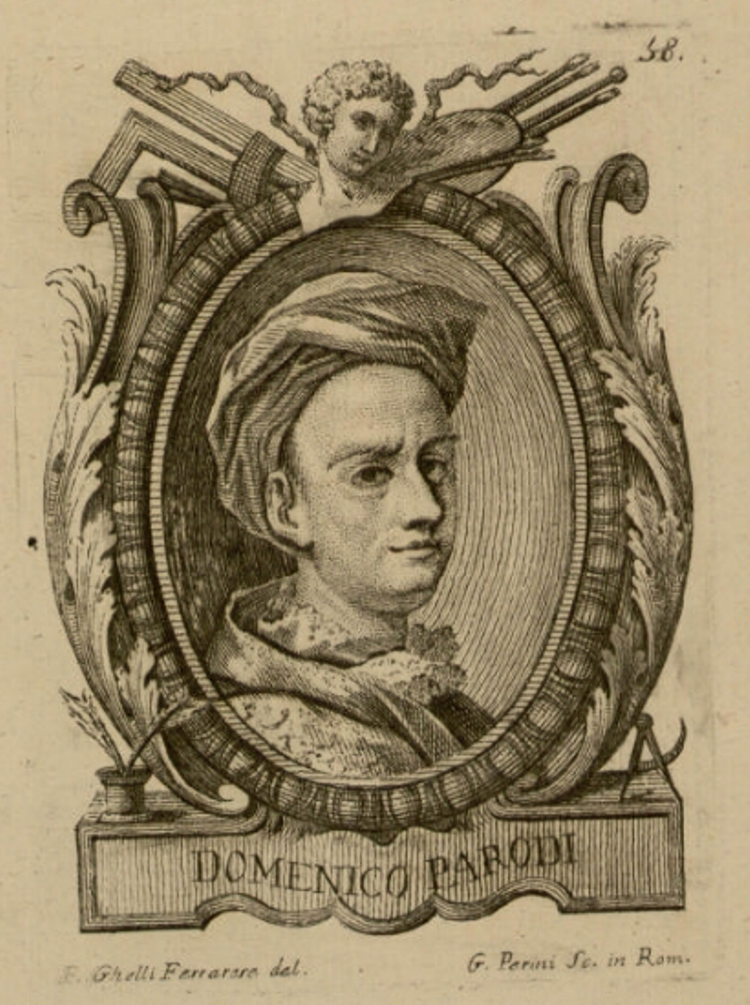
Domenico Parodi was an Italian late Baroque painter, sculptor, and architect.
His father was the famous Genoese sculptor Filippo Parodi and the painter Giovanni Battista Parodi was his younger brother.
Parodi is known for his fantastic decorative ceilings in religious buildings and palaces depicting mythological and allegorical subjects. He created commissioned busts and portraits, tombstones, altars, and sculptures. He also continued the sculptural tradition of his father, carving figures of Apollo, Ariadne, Bacchus and Diana in marble in elaborate techniques.

Giuseppe Badaracco also called “Il Sordo” (the Deaf), was an Italian painter of the Baroque period, active mainly in Genoa, in Liguria and in the island of Corsica. He worked for some years in Florence, where he copied many of the works of Andrea del Sarto. Returning to Genoa, he painted mainly for private customers. He worked also in Corsica (at that time part of the Republic of Genoa), where he painted locally influential paintings for some churches around Bastia.
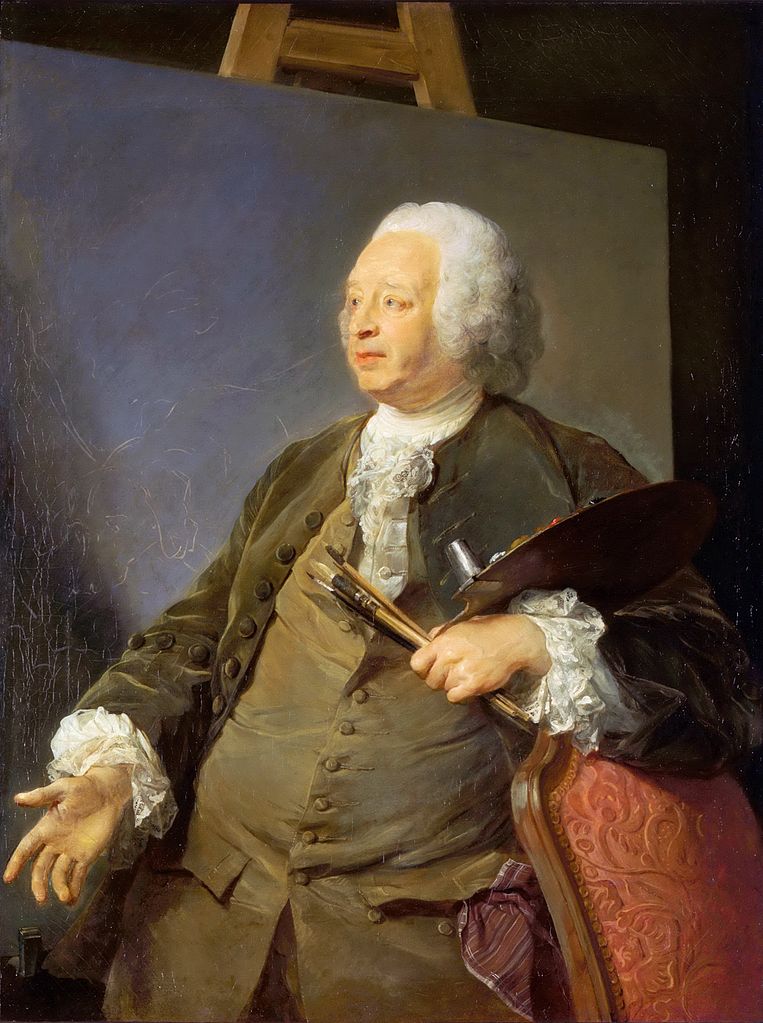
Jean-Baptiste Oudry was a French Rococo painter, engraver, and tapestry designer. He is particularly well known for his naturalistic pictures of animals and his hunt pieces depicting game. His son, Jacques-Charles Oudry, was also a painter.
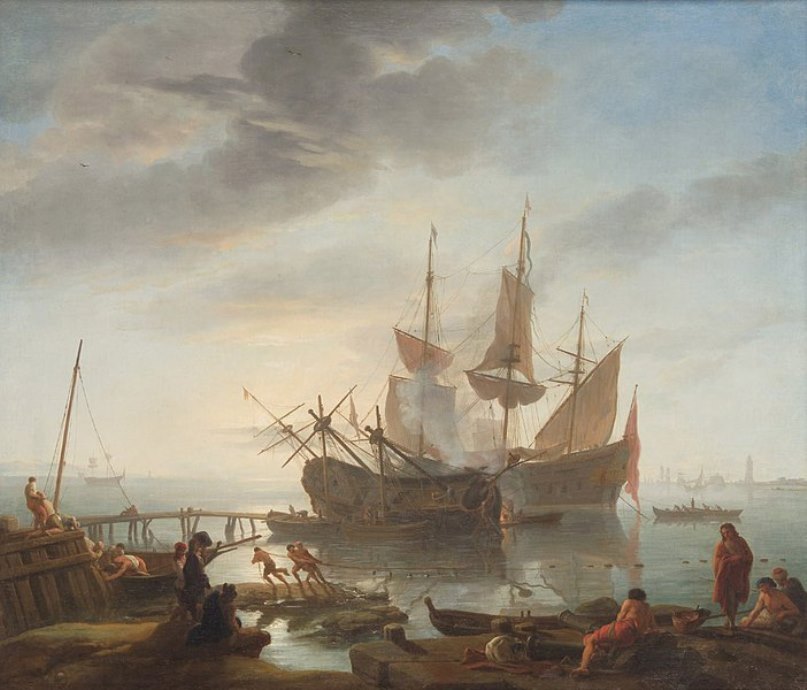
Adrien Manglard was a French marine painter and printmaker who worked most of his life in Italy.
He was a member of the Royal Academy of Painting and Sculpture of France. The artist mainly painted coastal landscapes with ships and sailing ships. As a very skilled marine landscape painter, Manglard was very successful and in demand, and had many commissions for paintings.
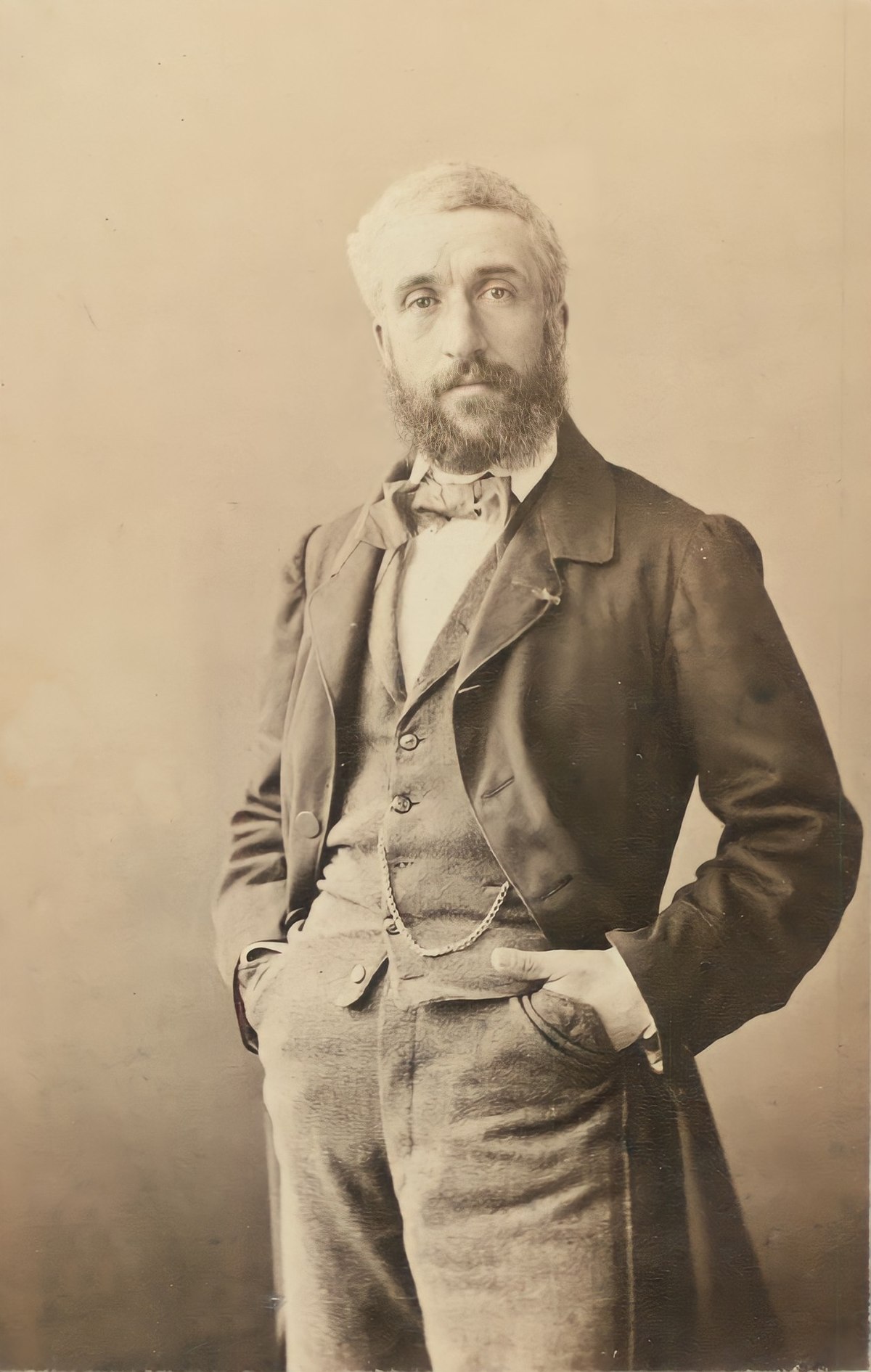
Philippe Rousseau was a French painter, acclaimed for his detailed still life and landscape paintings. Born in Paris in 1816, Rousseau's artistic journey was nurtured under the tutelage of Baron Antoine-Jean Gros and Jean-Victor Bertin at the École des Beaux-Arts. Initially venturing into landscapes, his artistry soon blossomed to encompass still life and animal subjects, earning him significant recognition at the Paris Salon from as early as 1834.
Philippe Rousseau's work is characterized by its meticulous attention to detail and a masterful use of light and shadow, which brought everyday objects and scenes to life with remarkable realism. His still lifes, often compared to those of the 18th-century French master Jean Siméon Chardin, demonstrate Rousseau's skill in creating texture and depth, making mundane subjects captivating through his lens. This skill earned him accolades, including medals at the Salon and the honor of being made a Knight of the Legion of Honor in 1852, later promoted to Officer in 1870.
His notable works span from early landscapes to intricate still lifes, reflecting his evolution as an artist. Among these, "Still Life with Ham" and "Still Life with Oysters" are celebrated examples housed in prestigious institutions like The Metropolitan Museum of Art and The National Gallery, London, showcasing his ability to elevate the still life genre to new heights. Another significant piece, "Still Life with Asparagus," illustrates his continued exploration of texture and light, held by the Cleveland Museum of Art.
Philippe Rousseau's legacy lies in his ability to merge the traditional with the innovative, influencing the art world well beyond his passing in 1887. His paintings, rich in detail and steeped in cultural significance, continue to attract art collectors and experts in art and antiques, offering a window into the refined aesthetic of 19th-century French art.
For those captivated by the elegance and historical depth of Philippe Rousseau's work, signing up for updates can provide exclusive access to new sales and auction events featuring his art. This opportunity invites collectors and enthusiasts alike to further explore the nuanced world Philippe Rousseau depicted, ensuring they remain at the forefront of the market for these timeless pieces.
.jpg)
Hubert Robert was a renowned French artist, celebrated for his captivating landscape paintings and architectural fantasies. Born in Paris in 1733, Robert's talent was nurtured early on, thanks to the patronage of the Choiseul family. His journey to Rome in 1754 marked a pivotal phase in his career, where he immersed himself in studying ancient and modern Italian architecture, significantly influencing his artistic style.
Hubert Robert's work is characterized by its romantic depiction of ruins, blending fantasy with historical accuracy, which earned him the nickname "Robert des Ruines." His landscapes and capricci, which are imaginative compositions of architectural elements, resonated with the art collectors and the aristocracy of his time, securing his place as a key figure in French art history.
Noteworthy are Hubert Robert's contributions to the design of picturesque gardens, where he provided atmospheric visions rather than practical layouts. His involvement in the creation of gardens at places like Ermenonville and Méréville showcases his ability to merge art with nature, creating spaces that were both innovative and inspirational.
His artworks, such as "The Port of Rome" and "The Old Bridge," are treasured in prestigious galleries worldwide, reflecting his enduring legacy in the realm of art and culture. For art collectors and experts, Hubert Robert's oeuvre offers a window into the 18th-century artistic landscape, where imagination and historical elements coalesce to form compelling visual narratives.
For updates on exhibitions and auction events related to Hubert Robert's works, sign up to stay informed about new discoveries and opportunities to appreciate the artistry of this exceptional French painter.
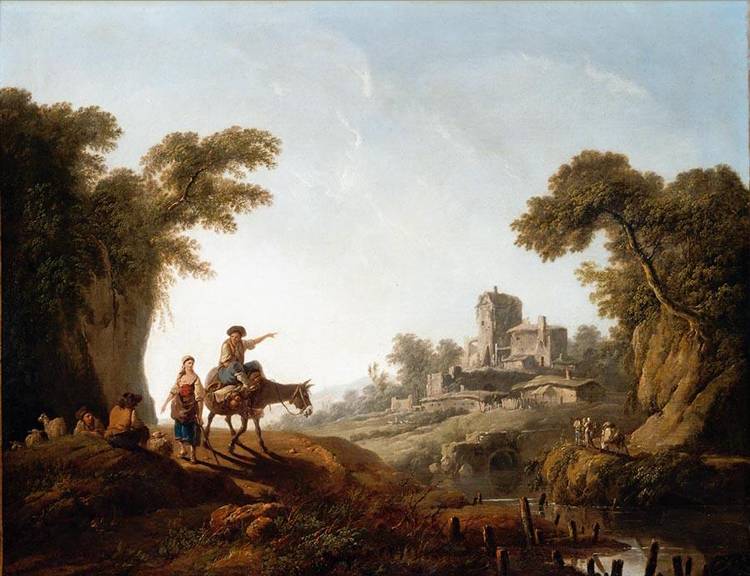
Jean-Baptiste Pillement was a French painter and designer, known for his exquisite and delicate landscapes, but whose importance lies primarily in the engravings done after his drawings, and their influence in spreading the Rococo style and particularly the taste for chinoiserie throughout Europe.

Jean-Jacques Bachelier was a French painter and innovator of porcelain and a member of the Royal Academy of Painting and Sculpture.
Originally a still-life painter, he later became world-renowned for his significant contributions to applied art. In 1765, Bachelier founded an art and crafts school in Paris with his own funds. He was in charge of the painters at the porcelain manufactory in Vincennes, where figures were produced from unglazed porcelain - biscuit. For many years Bachelier was the Director of Sevres porcelain manufactory and in fact became the creator of the Sevres style.
Bachelier also conducted research on encaustic painting (a painting technique in which the binding substance of paints is wax) and published works on art education.
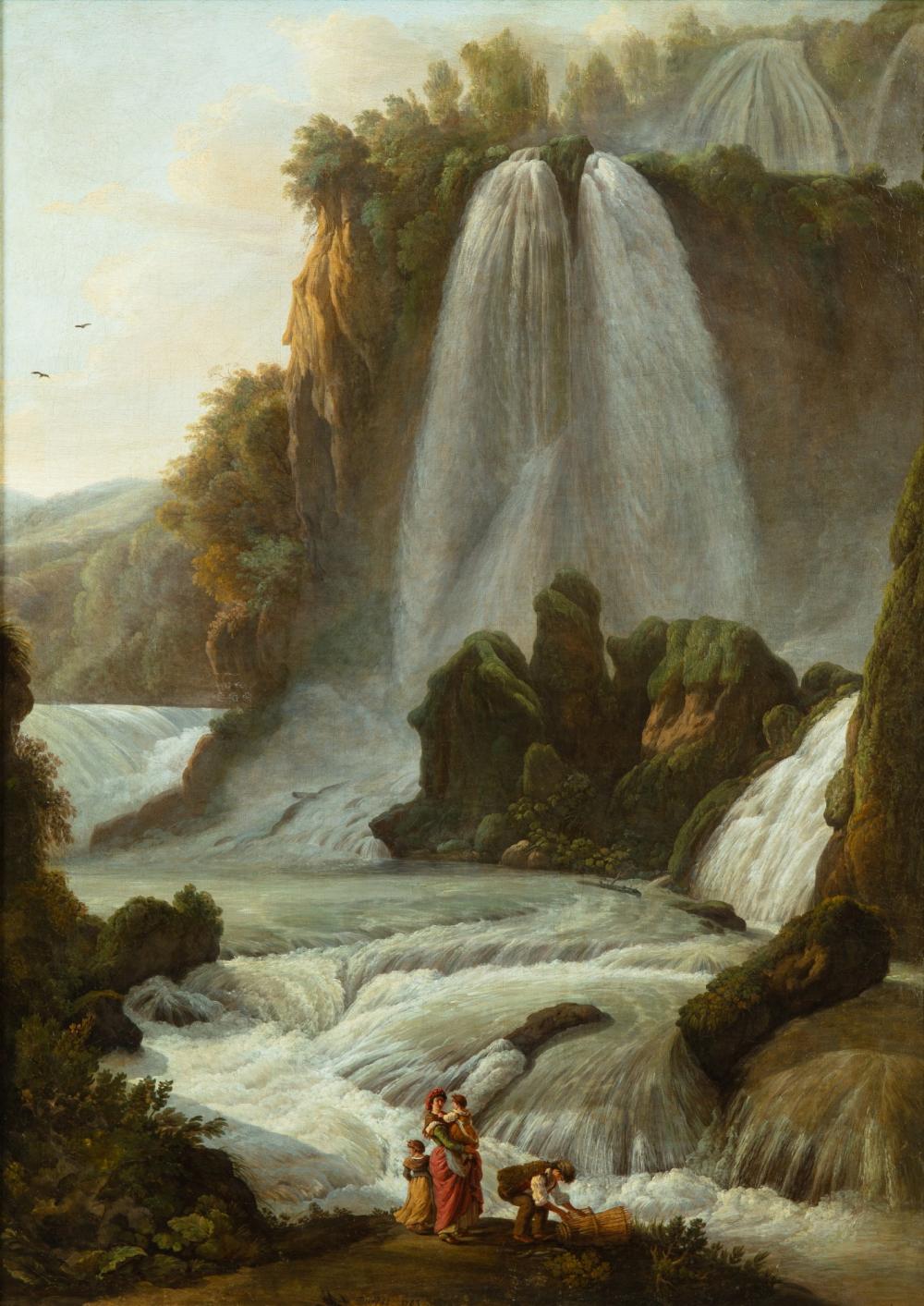
Abraham-Louis-Rodolphe Ducros was a Swiss painter, watercolourist and engraver, and was a main figure in the 'pre-romantic' movement.
Ducros is notable among watercolourists of his time for his large canvases, limited palette and forceful tones (achieved through application of gum) which allowed his paintings to be hung alongside oils at exhibitions.
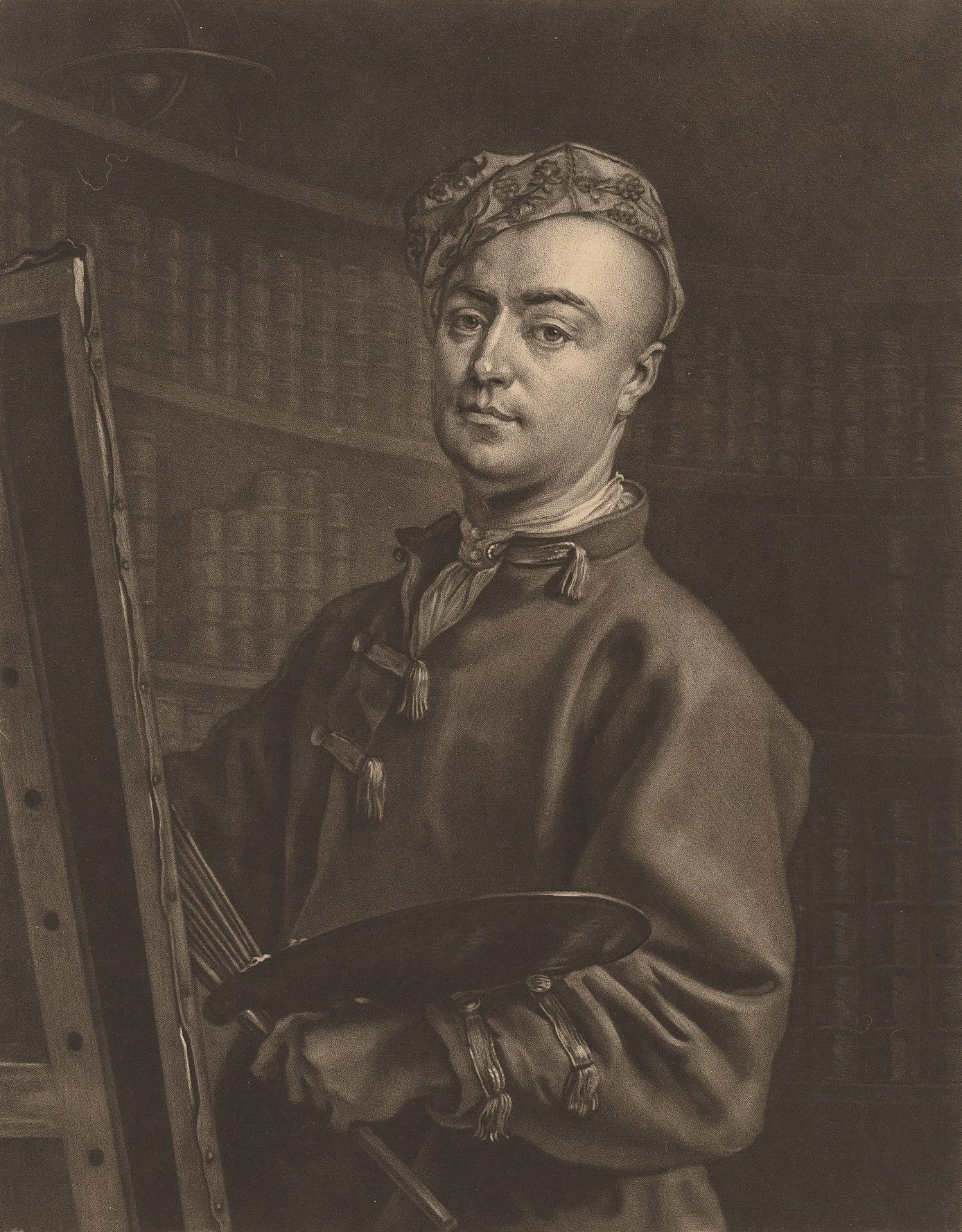
Philip Mercier (French: Philippe Mercier) was a French painter, draughtsman and printmaker, a leading representative of the early Rococo period, a student of Antoine Paine and follower of Antoine Watteau. Mercier grew up and studied in Berlin, but spent most of his artistic life in England; he also worked in France, Italy and Portugal.
His artistic legacy consists of about three hundred paintings, drawings and etchings: portraits and genre scenes. He was strongly influenced by his French and English contemporaries - Antoine Watteau, Jean-Simeon Chardin and William Hogarth — and exercised a marked influence on English Georgian painting as one of the creators of a variant of the informal group portrait - the so-called "conversation scene.
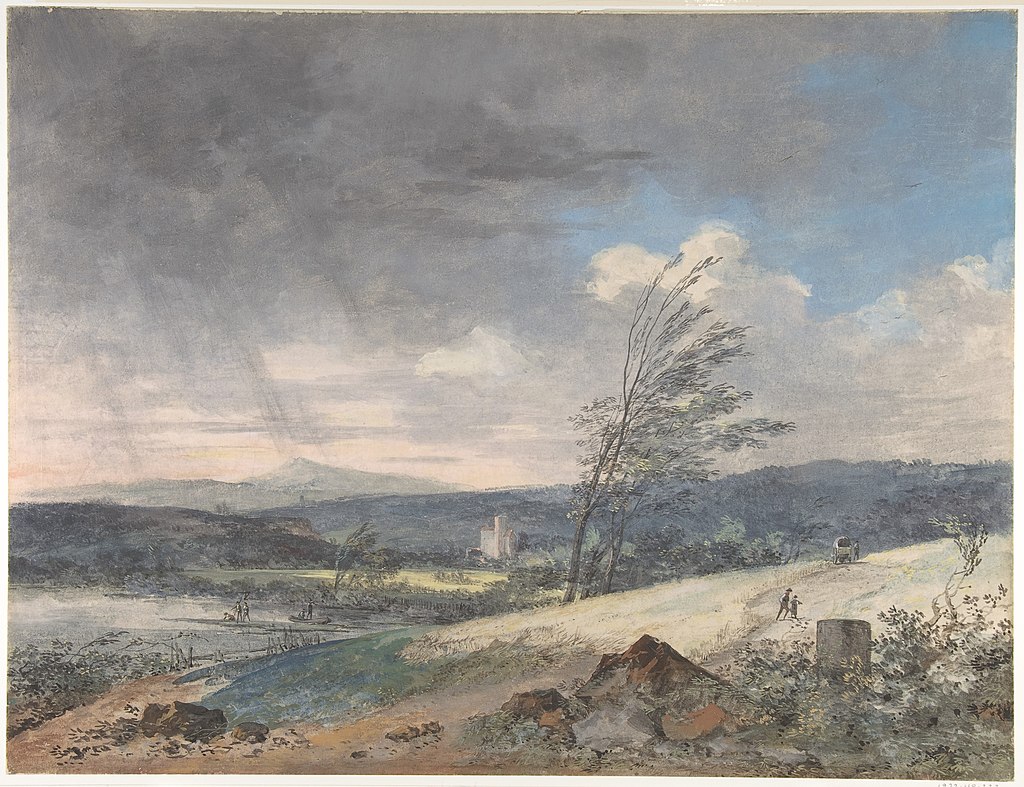
Louis-Gabriel Moreau was a French graphic artist and landscape painter.
He is frequently identified as "Moreau the elder" ("Moreau l’Aîné") in order to avoid confusion with his precocious younger brother, the artist Jean-Michel Moreau (1741–1814) who is sometimes identified as "Moreau the younger" ("Moreau le Jeune").
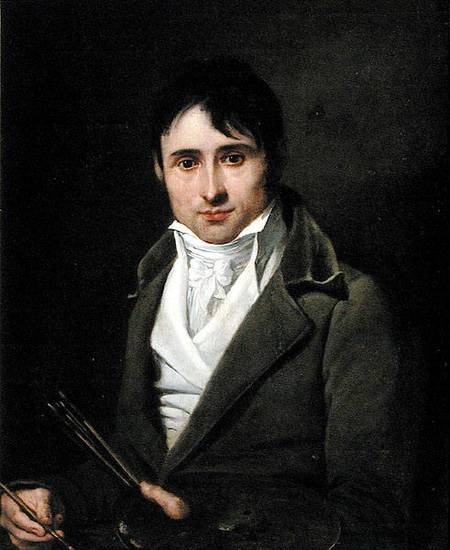
Jean-Victor Bertin was a French landscape painter of the Classical period.
He graduated from the Royal Academy of Painting and Sculpture. His works were constantly exhibited in the halls of the Paris Salon.
Bertin was one of the pioneers of the practice of painting outdoors - plein air.
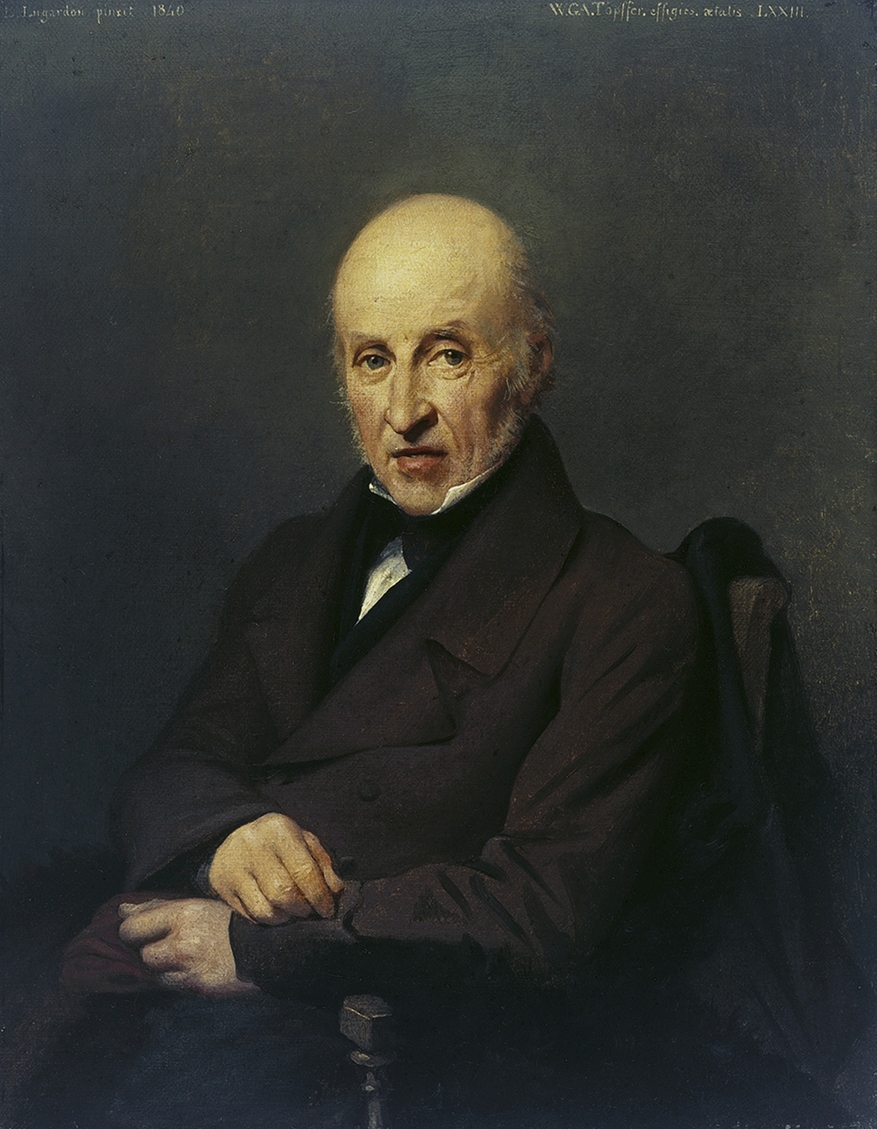
Wolfgang-Adam Töpffer was a Swiss and French painter, printmaker, caricaturist, and draftsman.
He studied at the Ecole des Beaux-Arts in Paris and painted landscapes and portraits. Later he became interested in plein air landscapes and excelled in this art. Töpffer is also known as a talented draughtsman and political cartoonist. His son Rudolf Töpffer also became a caricaturist.

Wolfgang-Adam Töpffer was a Swiss and French painter, printmaker, caricaturist, and draftsman.
He studied at the Ecole des Beaux-Arts in Paris and painted landscapes and portraits. Later he became interested in plein air landscapes and excelled in this art. Töpffer is also known as a talented draughtsman and political cartoonist. His son Rudolf Töpffer also became a caricaturist.
.jpg)
François Joseph Bosio was a French Neoclassical sculptor.
François Joseph Bosio was a pupil of the sculptor Augustin Pajou. With the support of the latter he made a study trip to Italy, where he studied statues by antique masters. He was also court sculptor to Kings Louis XVIII and Charles X.
At that time, he was favored by the French monarchs: Napoleon I decorated him with the Legion of Honor, Louis XVIII awarded him with the royal order of Saint Michail, he became an Institute of France member (in 1816) and in 1822, was granted the title of royal sculptor.
He was the director of the Academy of Fine Arts in Paris. The influence of Antonio Canova is noticeable in his sculptures.
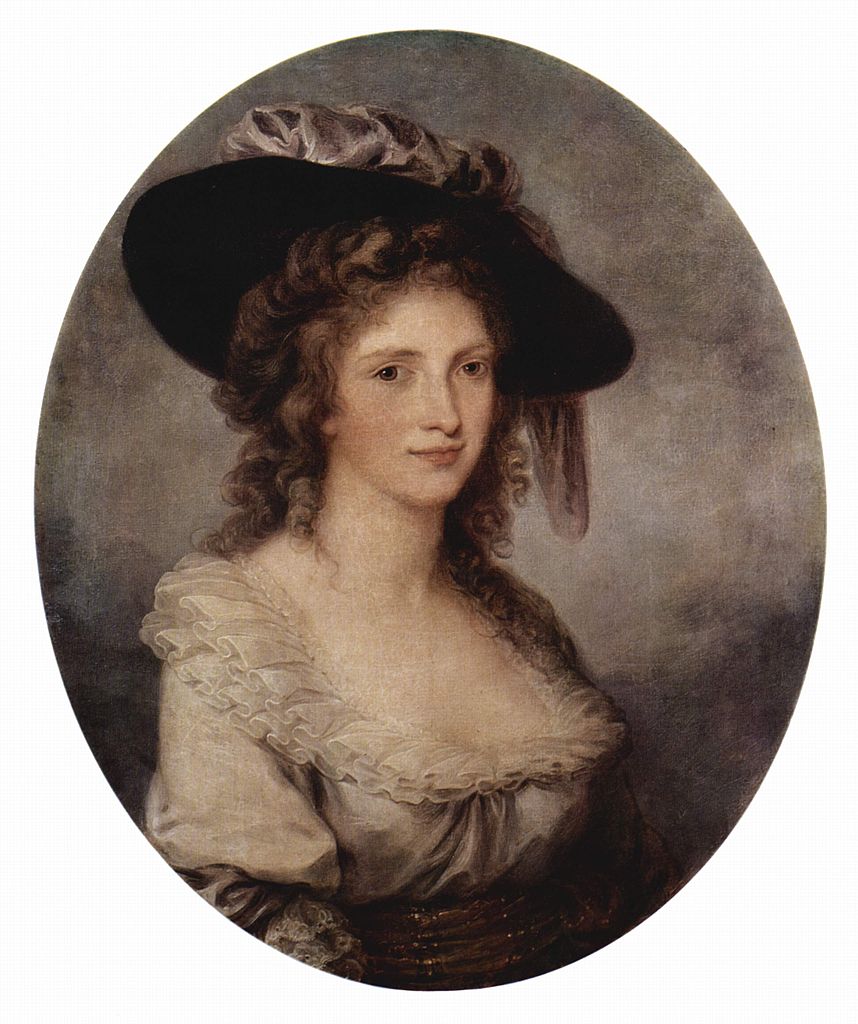
Maria Anna Angelica Kauffmann was a Swiss Neoclassical painter who had a successful career in London and Rome. Remembered primarily as a history painter, Kauffmann was a skilled portraitist, landscape and decoration painter. She was, along with Mary Moser, one of two female painters among the founding members of the Royal Academy in London in 1768.
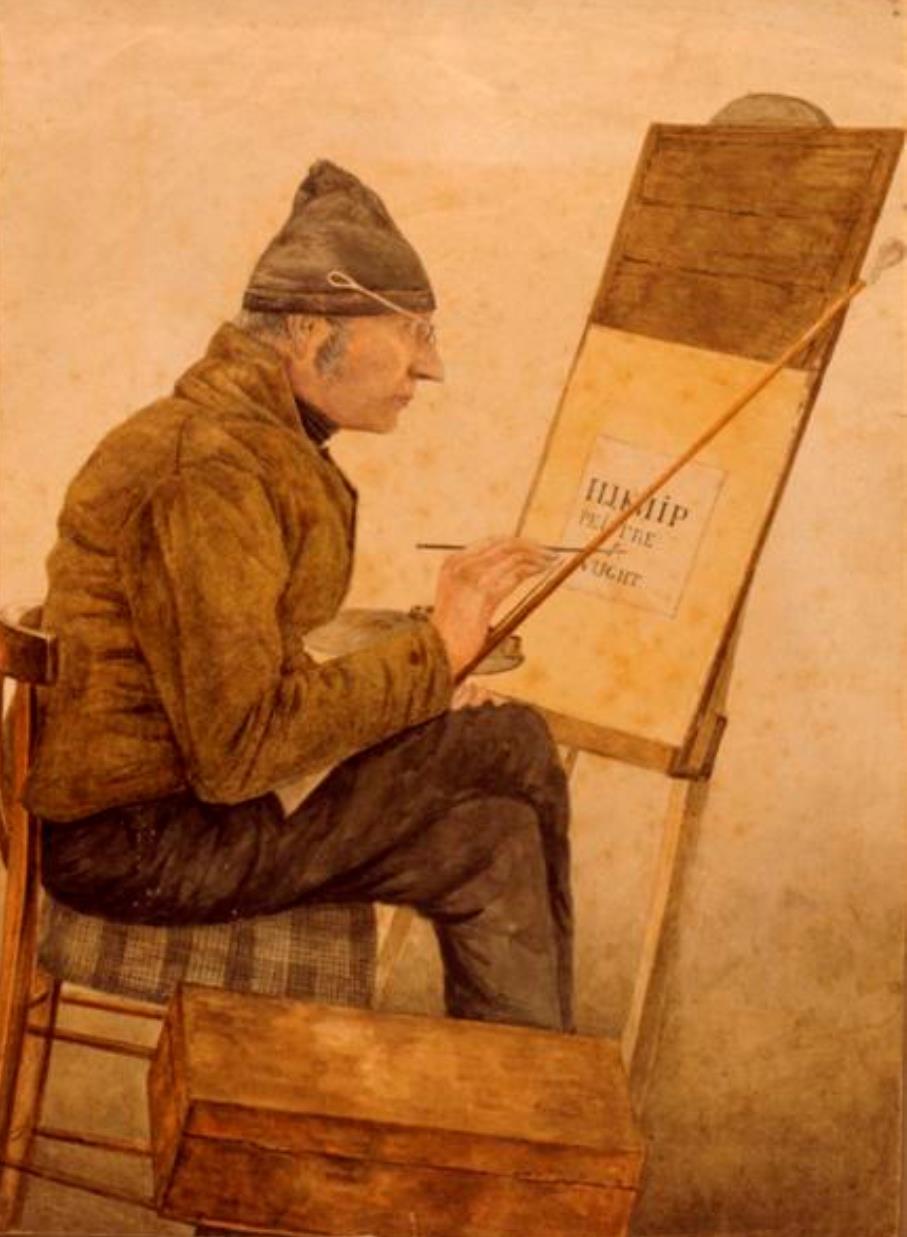
Hendrikus Johannes Knip or Henri Knip was a Dutch and Belgian landscape painter in the style of Dutch Romanticism and a draftsman.
A member of the Knip artistic dynasty: his father was the painter Matthäus Derk Knip (1785-1845), his grandfather was the painter Nicolaas Frederik Knip, and his uncles and aunts were also painters.
Hendrikus Knip worked in the Netherlands, Belgium, Italy and Switzerland.
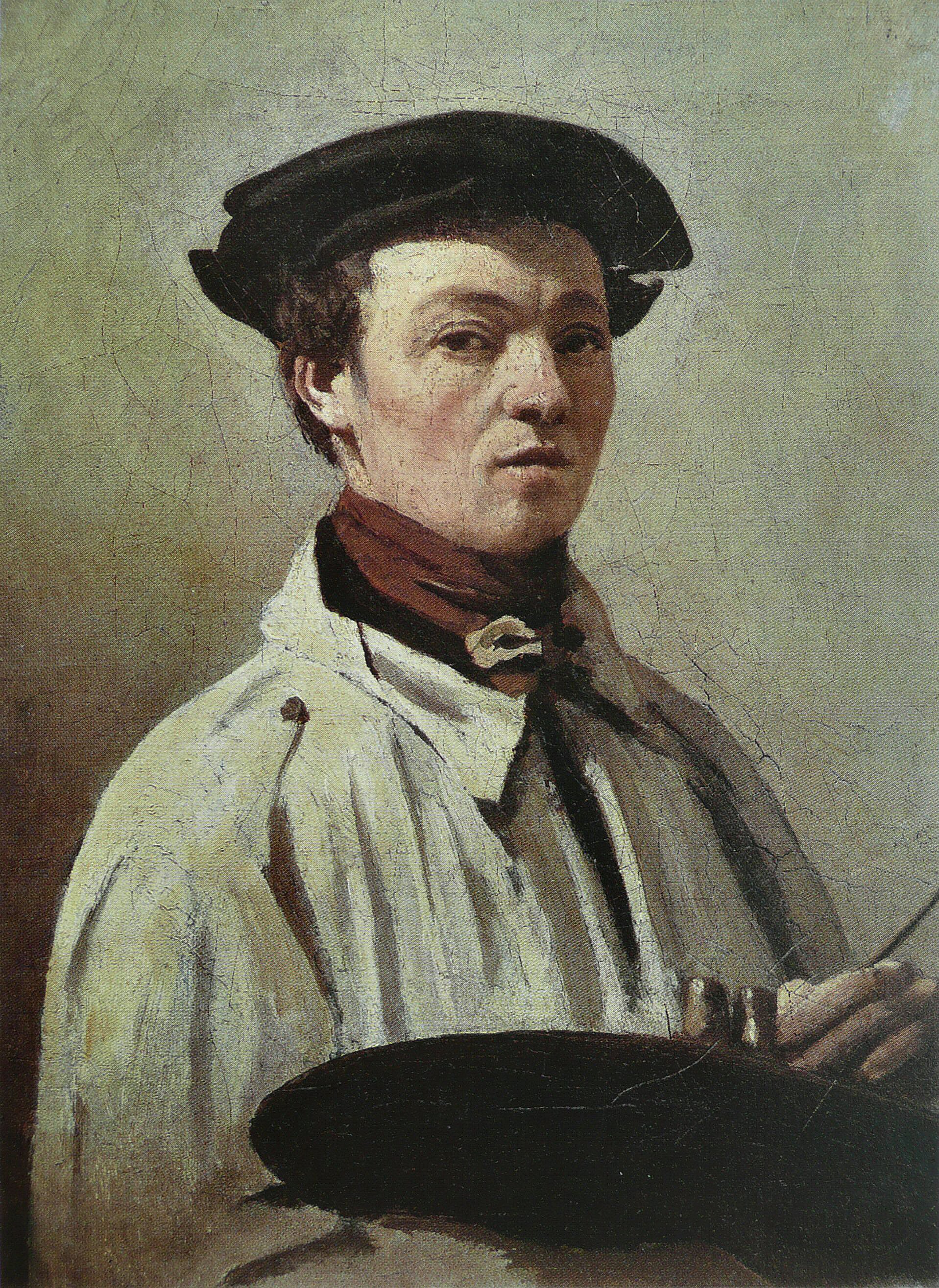
Jean-Baptiste-Camille Corot was a French landscape and portrait painter as well as a printmaker in etching. He is a pivotal figure in landscape painting and his vast output simultaneously referenced the Neo-Classical tradition and anticipated the plein-air innovations of Impressionism.
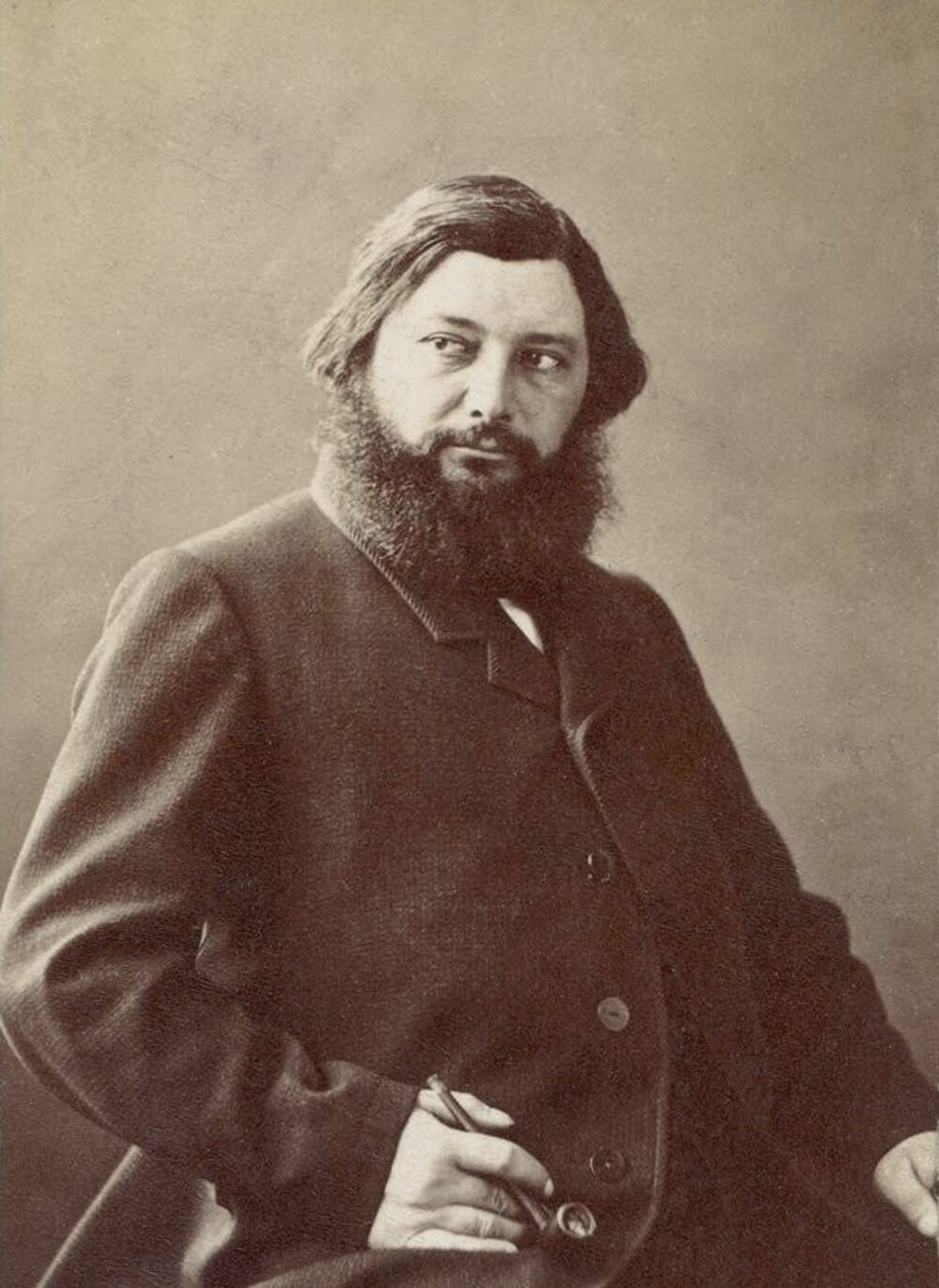
Jean Désiré Gustave Courbet was a French painter who led the Realism movement in 19th-century French painting. Committed to painting only what he could see, he rejected academic convention and the Romanticism of the previous generation of visual artists. His independence set an example that was important to later artists, such as the Impressionists and the Cubists. Courbet occupies an important place in 19th-century French painting as an innovator and as an artist willing to make bold social statements through his work.
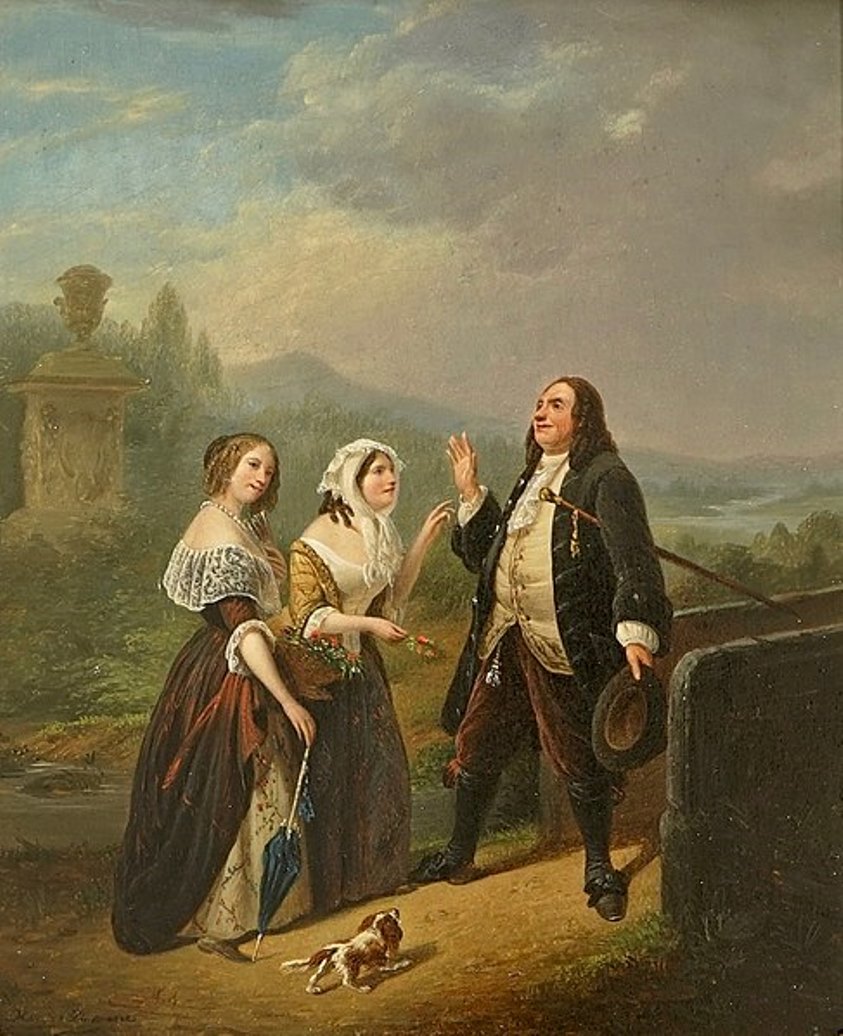
Jean Henri de Coene was a Belgian painter and master of everyday scenes.
He is known for his genre paintings, he also painted portraits. He was a professor at the Brussels Academy of Art.
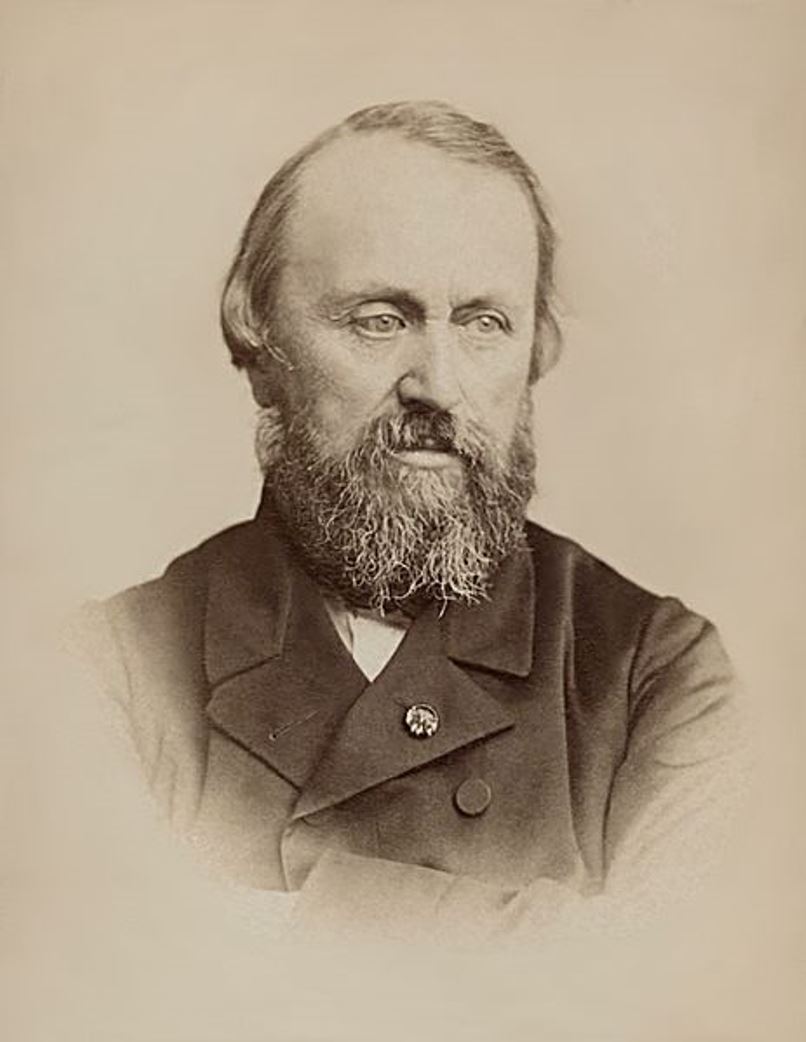
Jean-Hippolyte Flandrin was a French painter of late classicism.
He received his art education in Rome, returned to Paris and engaged mainly in religious painting. Flandrin carried out commissions to paint and fresco chapels and churches and was a recognized master in this field. He also did portraits and depicted nudes of men.
Flandrin was a member of the Académie des Beaux-Arts in Paris.
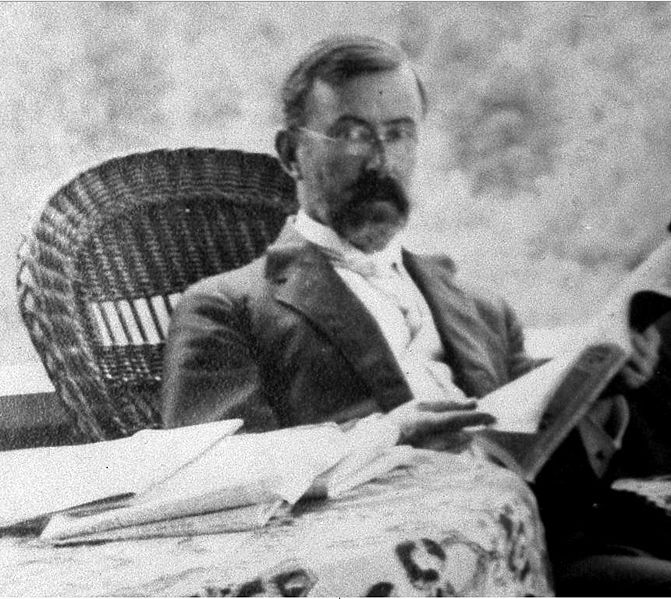
Charles Courtney Curran is an American impressionist painter.
He was educated at the National Academy of Design (New York), then studied at the Académie Julian in Paris.
Curran is known for his romantic depictions of young women in nature, where they are walking, playing sports or just admiring flowers. The artist also painted plein air, experimenting with a variety of artistic styles, including Impressionism, Symbolism, Tonalism and Naturalism.
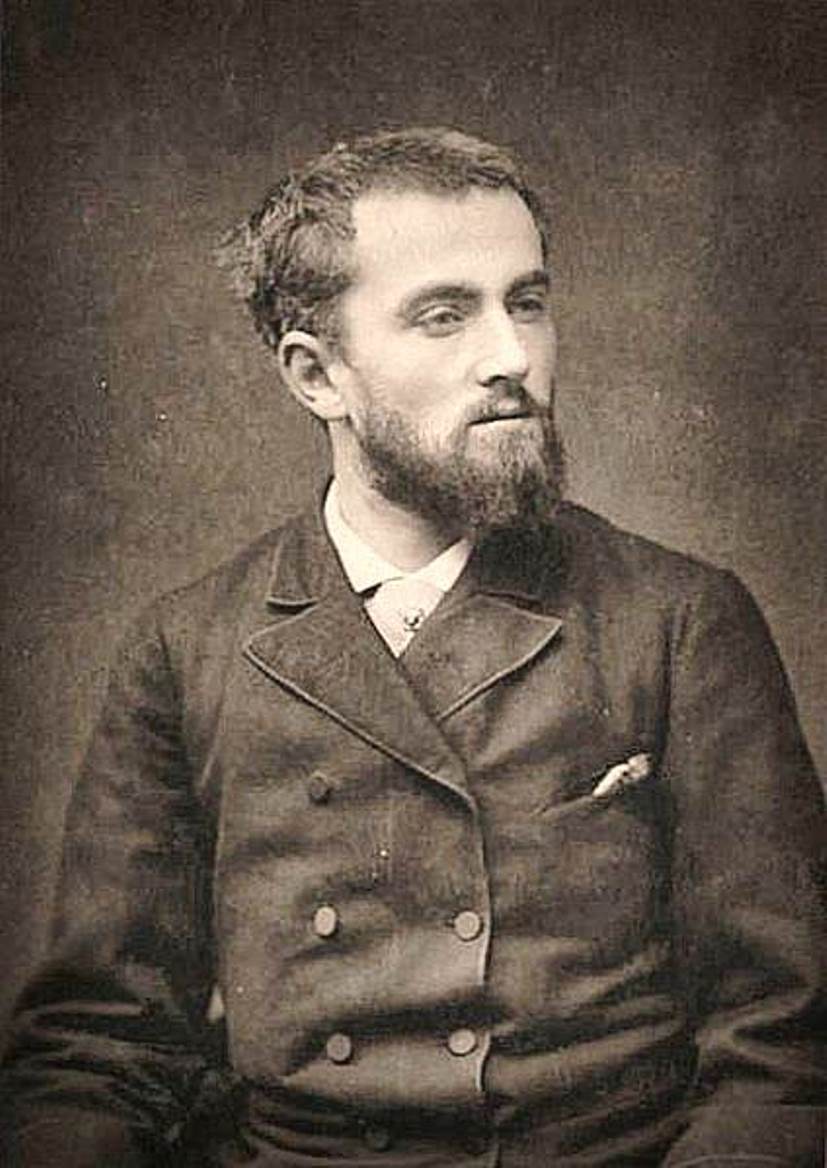
Norbert Goeneutte was a French impressionist painter, printmaker, and illustrator.
Goeneutte is best known as the author of drawings for the novel Earth by Emile Zola. He also created more than 150 etchings and lithographs.
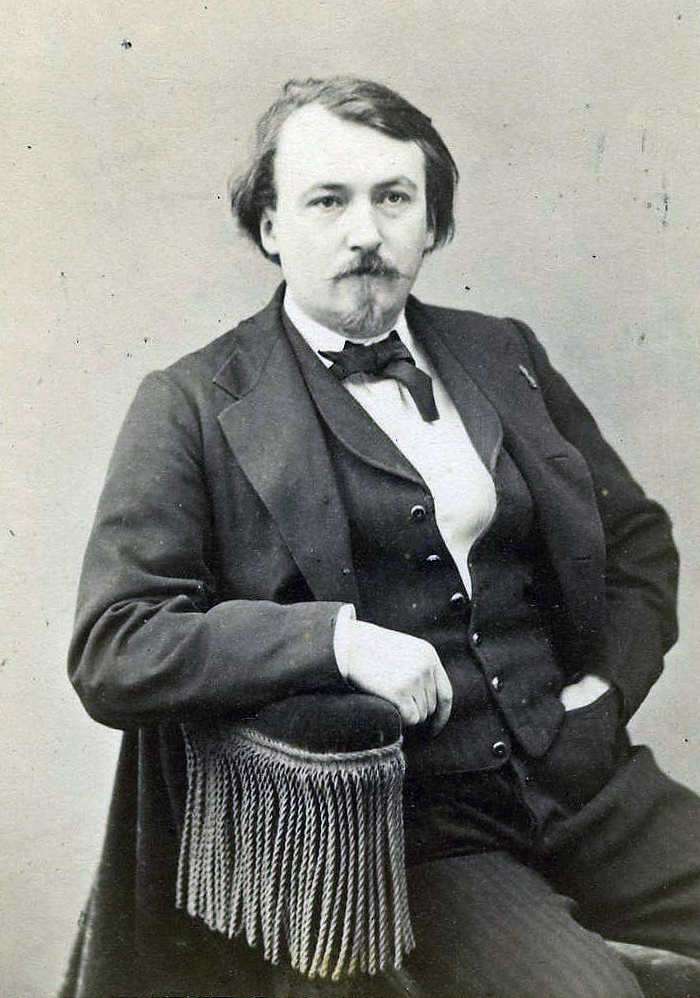
Gustave Doré, full name Paul Gustave Louis Christophe Doré, was a French painter, sculptor, graphic artist, illustrator, and cartoonist.
Doré was very industrious and prolific: he created more than 10,000 illustrations for art books as well as the Bible. He decorated the works of Rabelais, Balzac, Cervantes, Dante and Milton with his lively drawings, making Doré's name famous. He had a special gift for illustrating nature and fairy tales.

Norbert Goeneutte was a French impressionist painter, printmaker, and illustrator.
Goeneutte is best known as the author of drawings for the novel Earth by Emile Zola. He also created more than 150 etchings and lithographs.
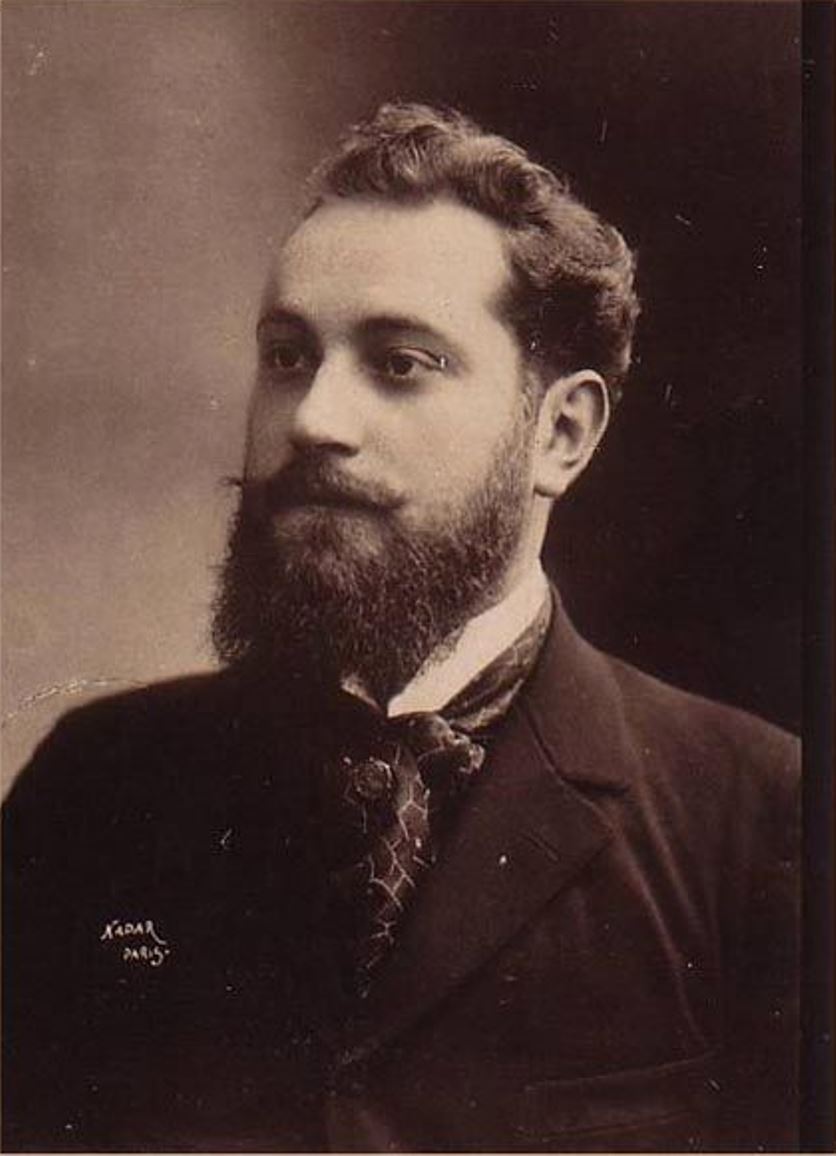
Albert Guillaume was a French artist, cartoonist, illustrator, and master of the poster.
Guillaume was a prolific illustrator: he worked for magazines, books, and almanacs, and his satirical drawings were published in Parisian humor magazines. He was also a painter and designer of theater posters and advertising posters. Working for the large Parisian printing company Camis, he designed a series of highly successful posters for commercial goods.
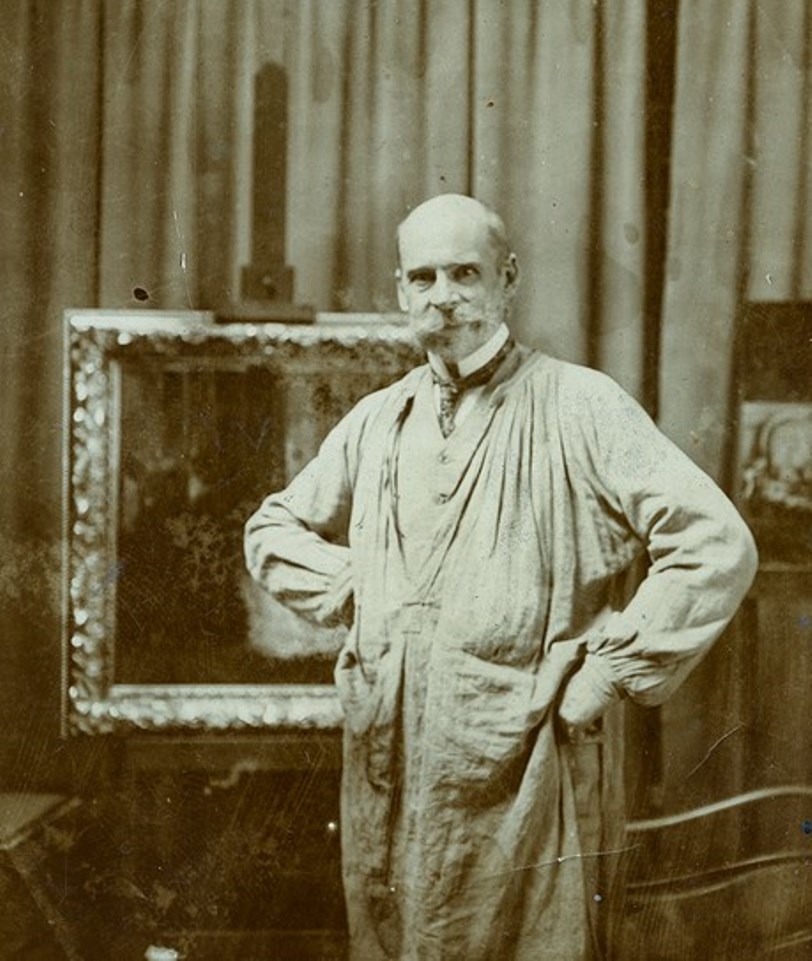
Gaston La Touche was a French painter, illustrator, engraver, and sculptor, a representative of Post-Impressionism.
In his paintings the artist showed his idealistic universe inhabited by nymphs in parks, among fountains, flowers and fireworks.

Charles Joshua Chaplin was a French painter and printmaker.
He studied painting at the École des Beaux-Arts de Paris and initially painted realistic landscapes. Later, however, Chaplin became known for his elegant neo-Roco portraits of young women. These sensual images of women and young girls posing erotically in misty surroundings and often dressed in transparent clothing attracted the interest of high society and the aristocracy of the time.
In the mid-19th century, Chaplin's works were a great success, he was often exhibited in the salons in Paris and at the Royal Academy of Arts in Great Britain and was one of the most popular painters of the Second Empire.
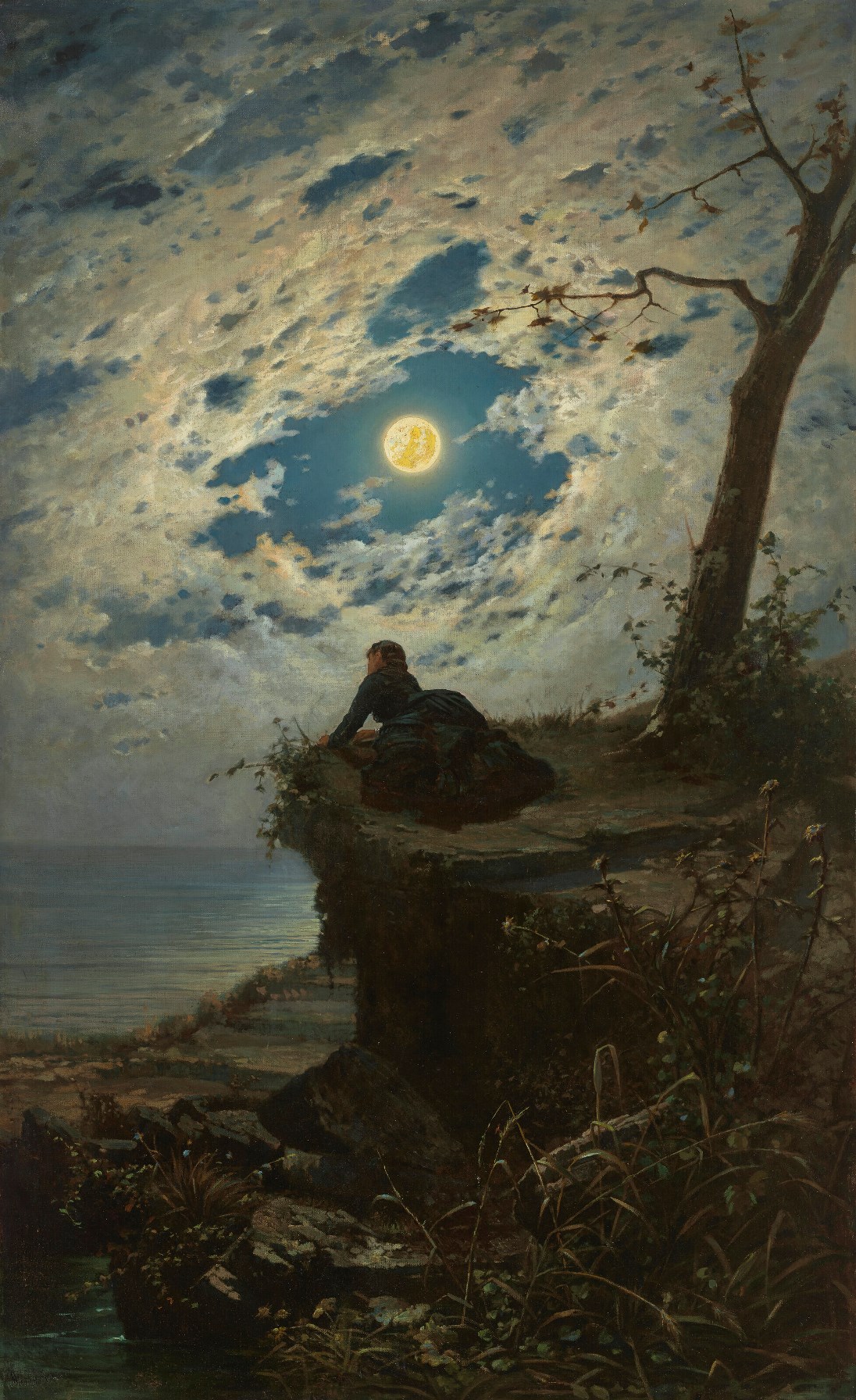
Alfonso Simonetti was an Italian Romantic painter who lived and worked in Italy.
He studied painting at the Royal Institute of Fine Arts in Naples. Simonetti's favorite subject was the night landscape under moonlight. In addition to landscapes, he painted historical themes and portraits.

Jozsef Ripple-Ronai is a Hungarian impressionist painter.
He studied painting at the Munich Academy and there he became acquainted with contemporary art movements. Ripple-Ronai moved almost immediately to Post-Impressionism in his art. Returning home to Hungary, he was the first to introduce new currents and styles to Hungarian painting.
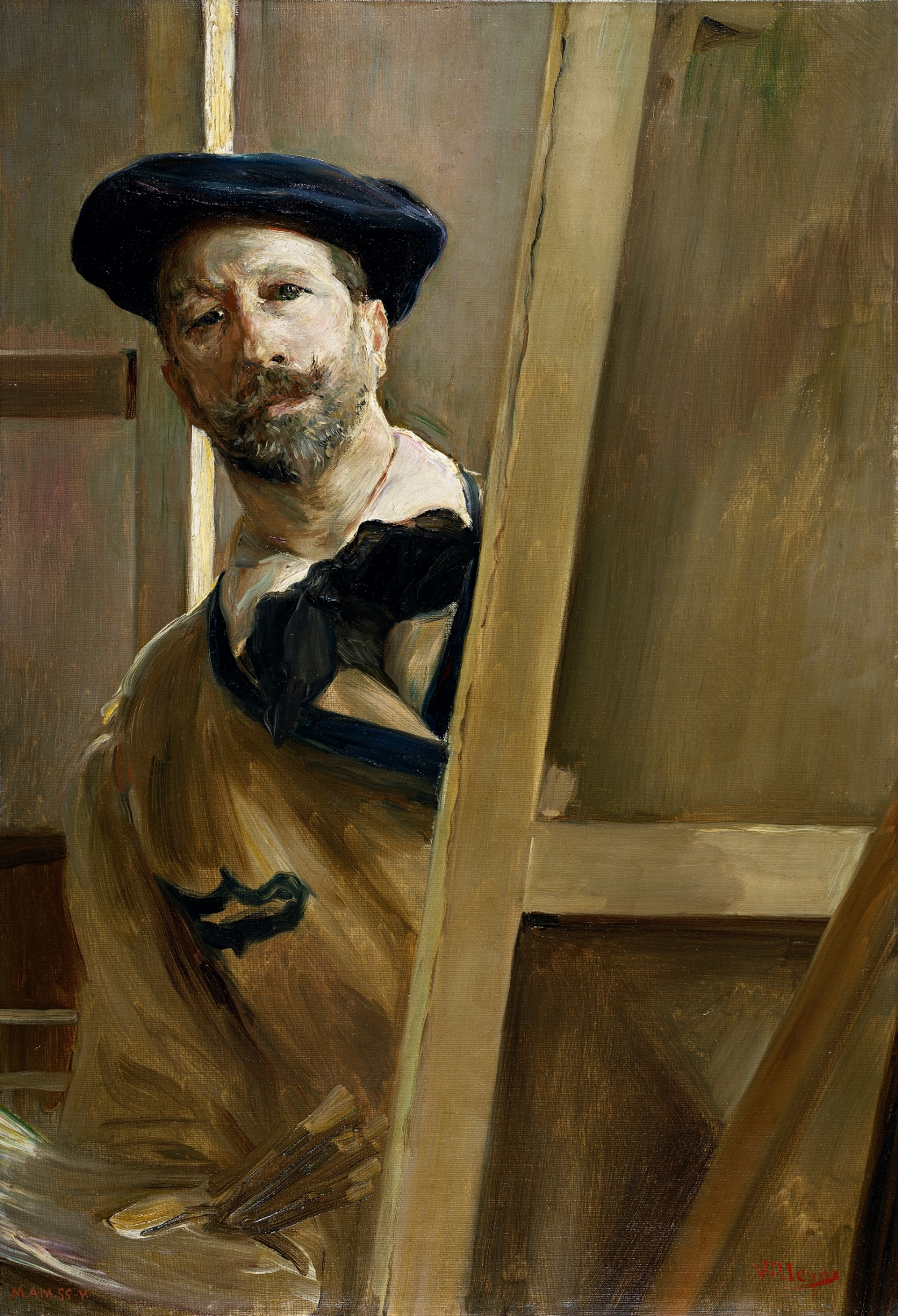
José Villegas Cordero was a Spanish painter, master of costume and genre scenes, who directed the Prado Museum from 1901 to 1918.
He studied at the School of Fine Arts in Seville and became known as a talented genre painter, noting interesting domestic scenes and accurately portraying the characters. Domestic painting at that time was very popular with the public. The artist also deals with the themes of the East, with great skill drawing pictures from sketches he made on a trip to Morocco.
In 1898 Villegas Cordero was appointed director of the Spanish Academy in Rome, and in 1901 he was appointed director of the Museo del Prado, the same museum that had once copied Velázquez's paintings himself while studying his art.
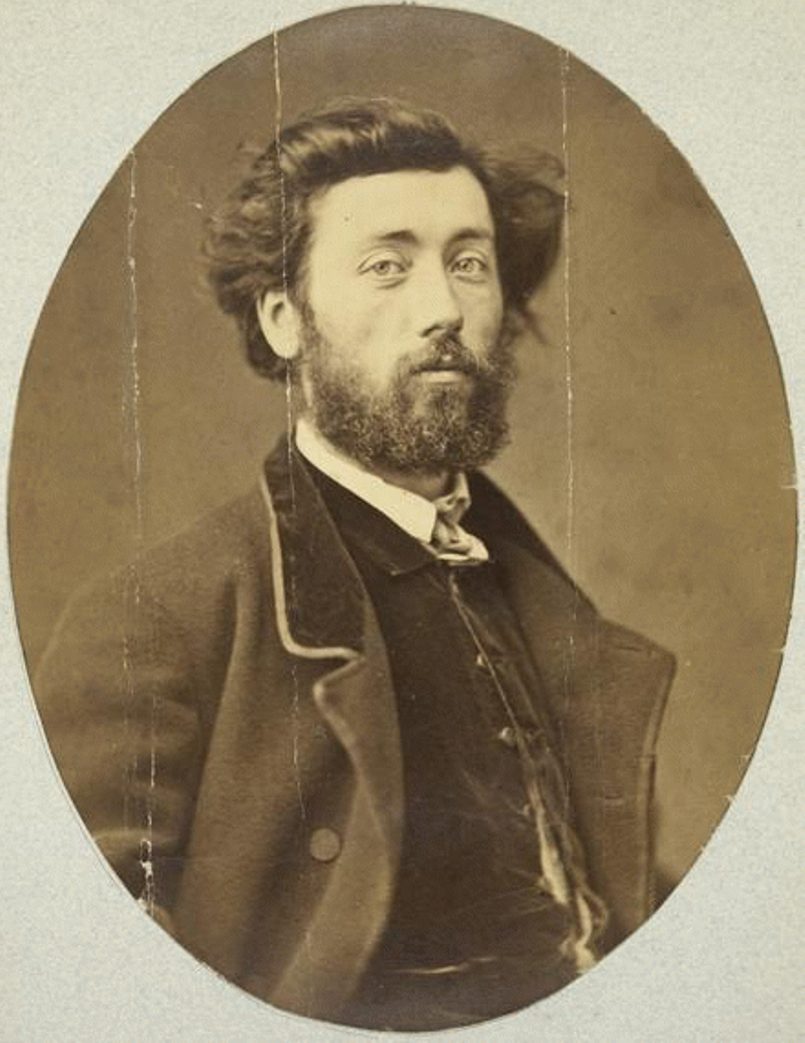
Antoine Vollon was a French realist painter known for his still life and landscape paintings.
He studied printmaking at the Ecole des Beaux-Arts in Lyon and initially worked in a factory painting crockery. Later participation in exhibitions brought success to Vollon: his works are distinguished by sincerity and expressiveness, and his subjects are varied. He painted seascapes, rural landscapes, genre compositions and animals, but most of all in the work of Antoine Vollon still lifes depicting kitchen utensils, dishes and game, which seems to have just been caught.
His son Alexis Vollon (1865-1945) also became an artist.

Antoine Vollon was a French realist painter known for his still life and landscape paintings.
He studied printmaking at the Ecole des Beaux-Arts in Lyon and initially worked in a factory painting crockery. Later participation in exhibitions brought success to Vollon: his works are distinguished by sincerity and expressiveness, and his subjects are varied. He painted seascapes, rural landscapes, genre compositions and animals, but most of all in the work of Antoine Vollon still lifes depicting kitchen utensils, dishes and game, which seems to have just been caught.
His son Alexis Vollon (1865-1945) also became an artist.
 Констан Тройон. Неизвестный автор. Дагерротип «Констан Тройон», 1856.jpg)
Constant Troyon was a French painter of the Barbizon school. In the early part of his career he painted mostly landscapes. It was only comparatively late in life that Troyon found his métier as a painter of animals, and achieved international recognition.
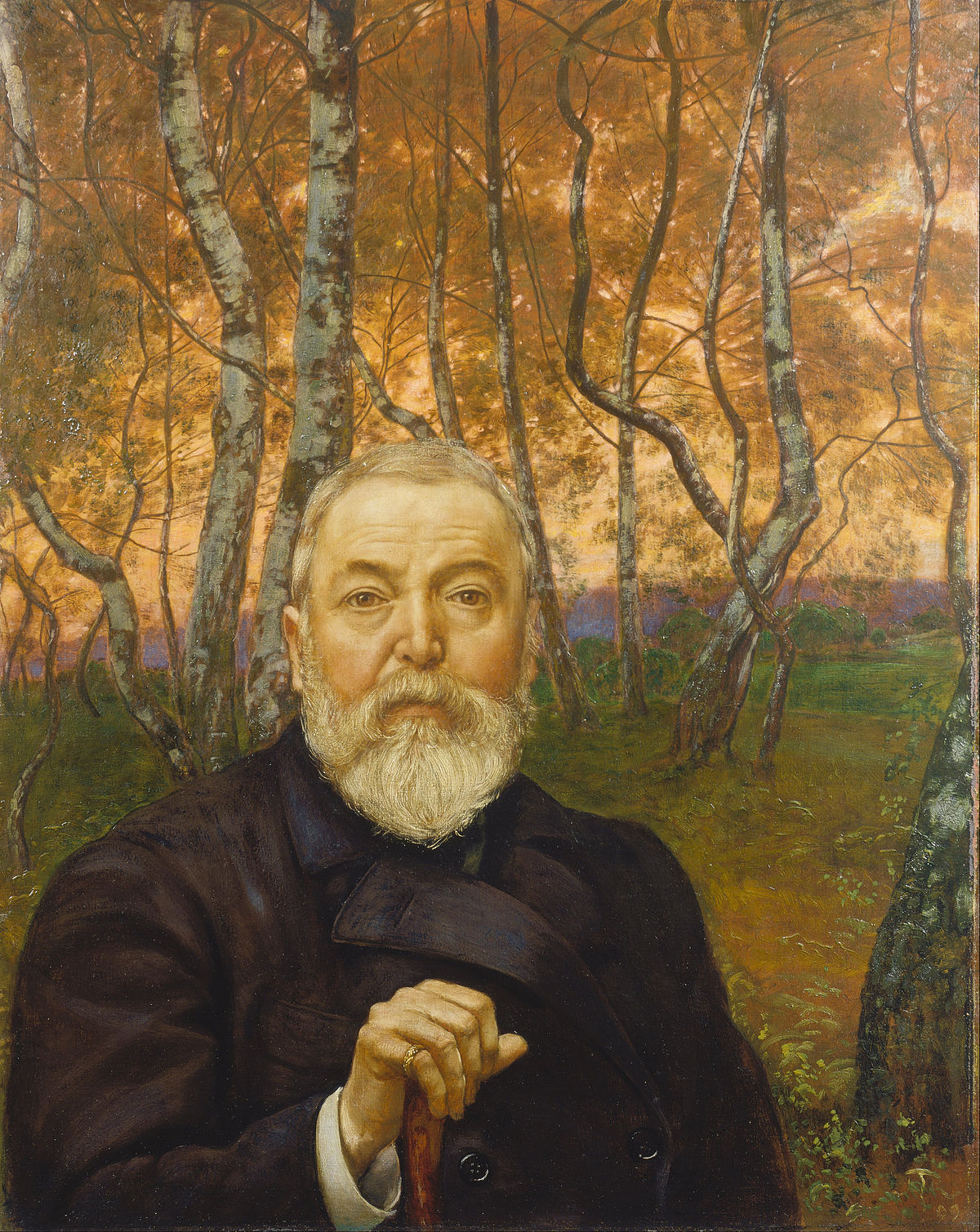
Hans Thoma was a German painter.
In spite of his studies under various masters, his art has little in common with modern ideas, and is formed partly by his early impressions of the simple idyllic life of his native district, partly by his sympathy with the early German masters, particularly with Albrecht Altdorfer and Lucas Cranach the Elder. In his love of the details of nature, in his precise drawing of outline, and in his predilection for local coloring, he has distinct affinities with the Pre-Raphaelites.
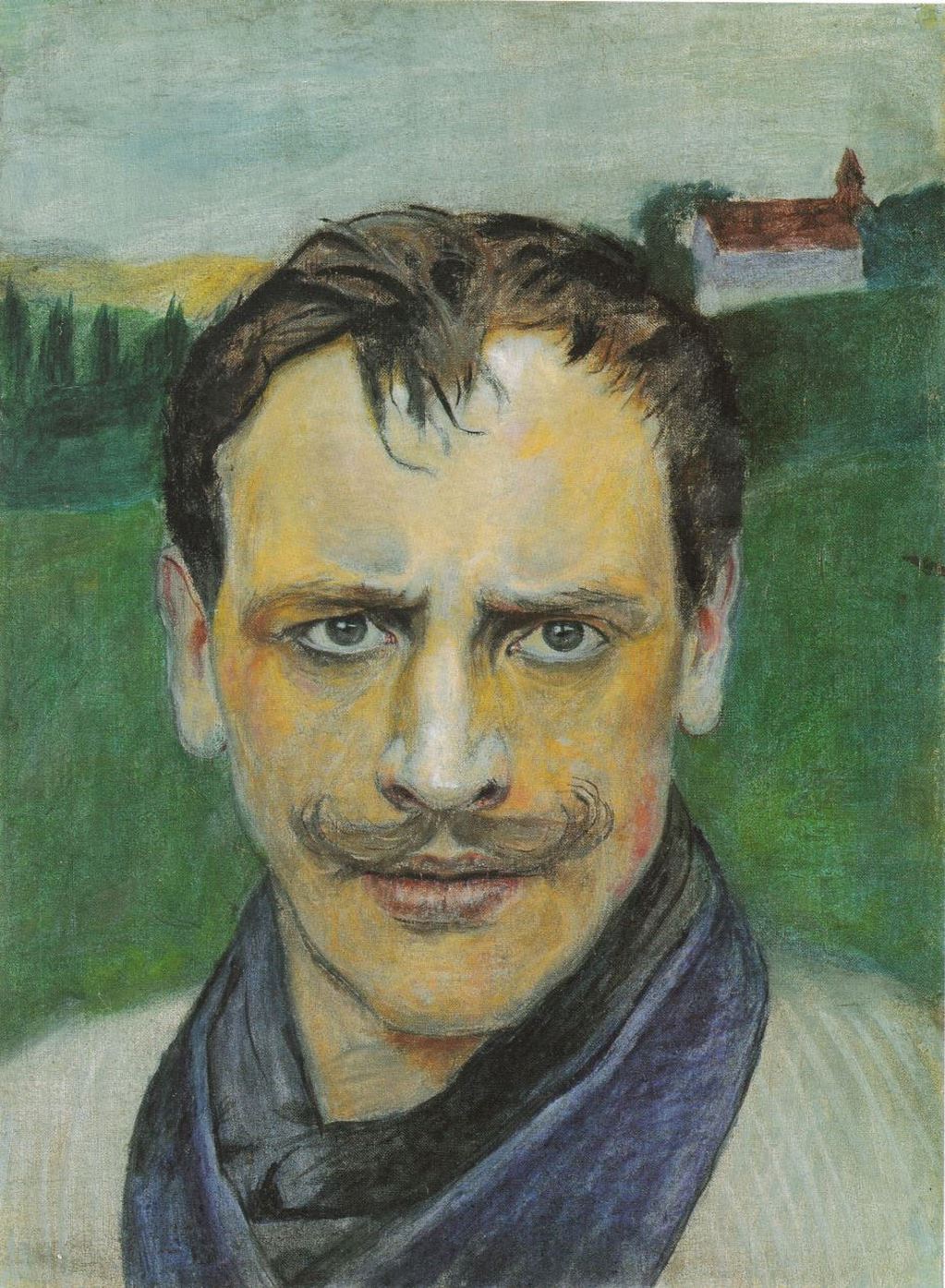
Harald Oskar Sohlberg was a Norwegian painter, a leading representative of the symbolist landscape in Norwegian painting at the end of the 19th century.
He painted himself from an early age, and studied in Copenhagen at the art school of Christian Zartmann and with various Norwegian artists. His landscapes are notable for their careful elaboration, but Zohlberg paid particular attention to light - moonlight at night or sunset, but light plays a major role in his works.
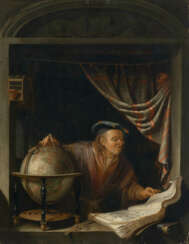

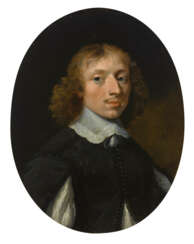

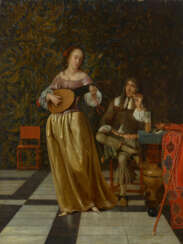



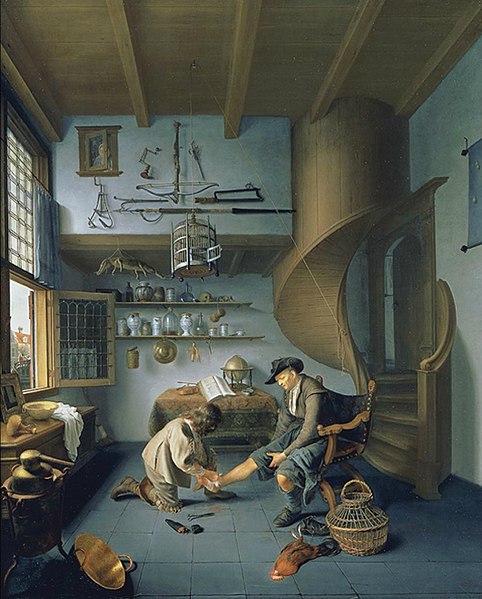
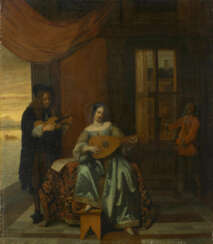

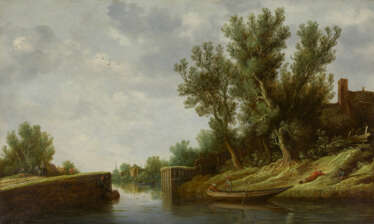



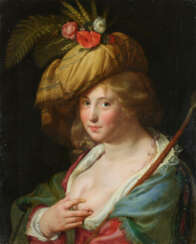

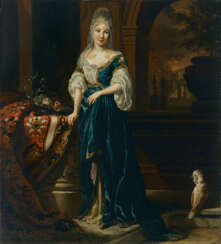

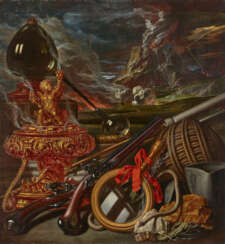

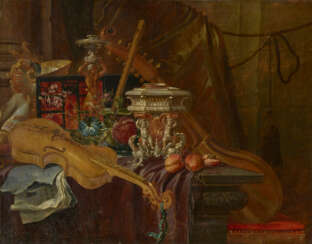

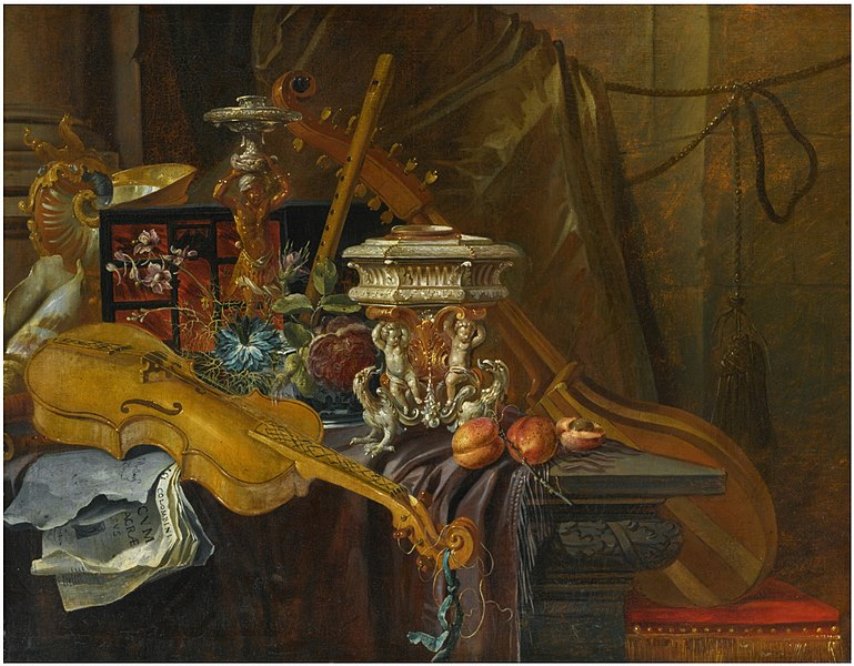
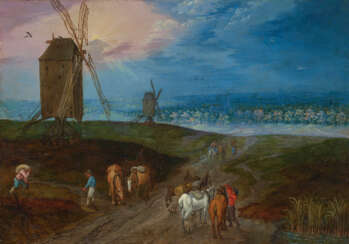

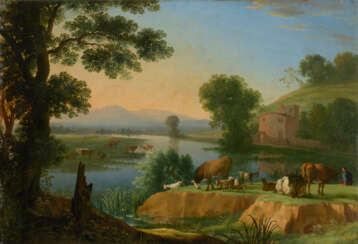

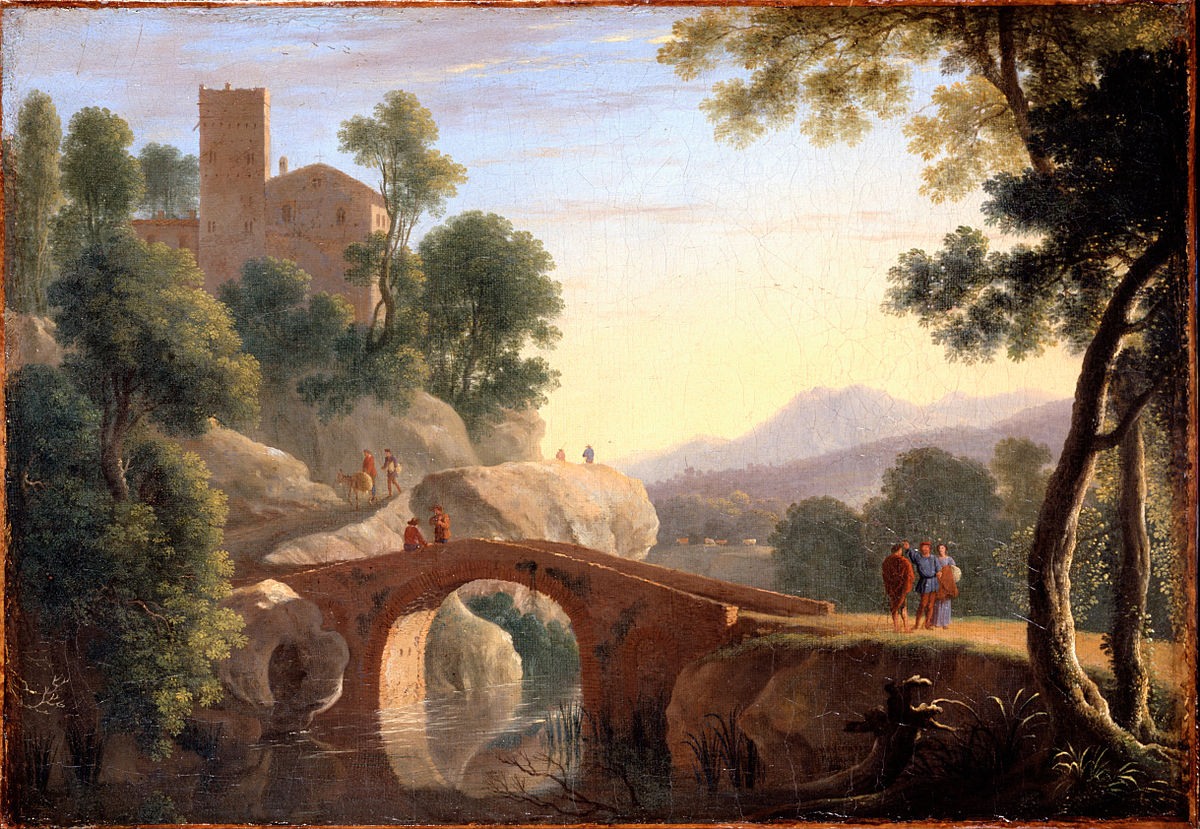
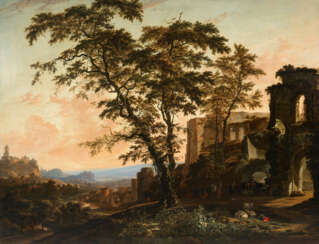

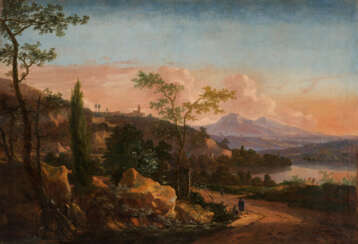

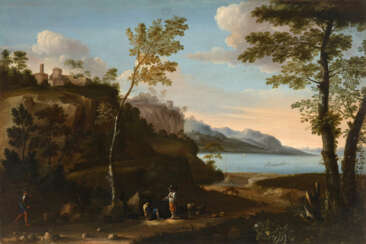

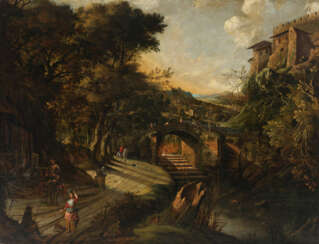

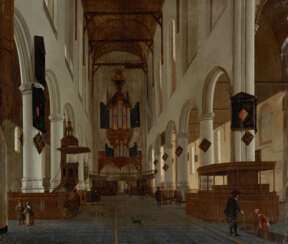

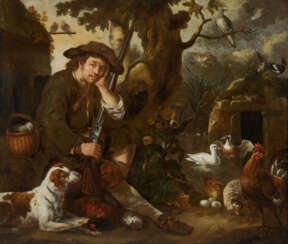

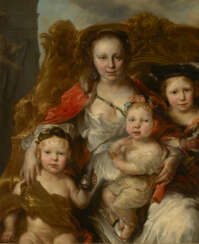

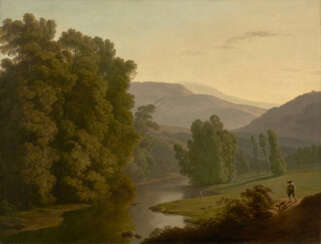

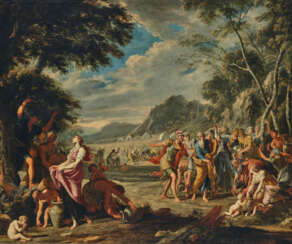

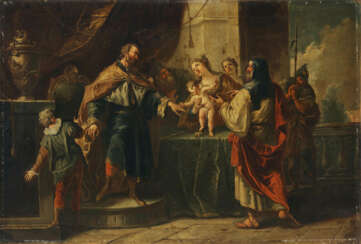



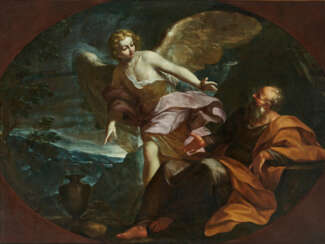

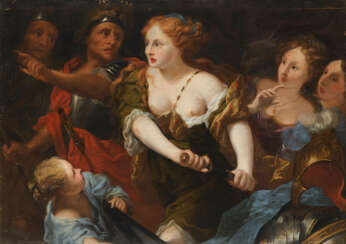

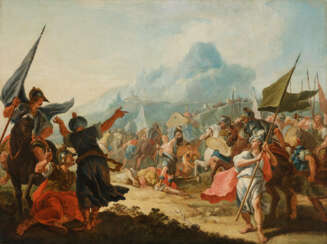

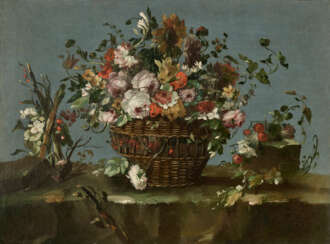

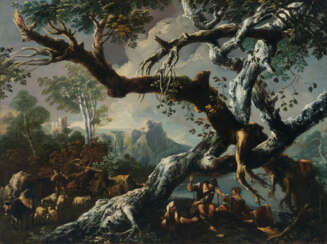

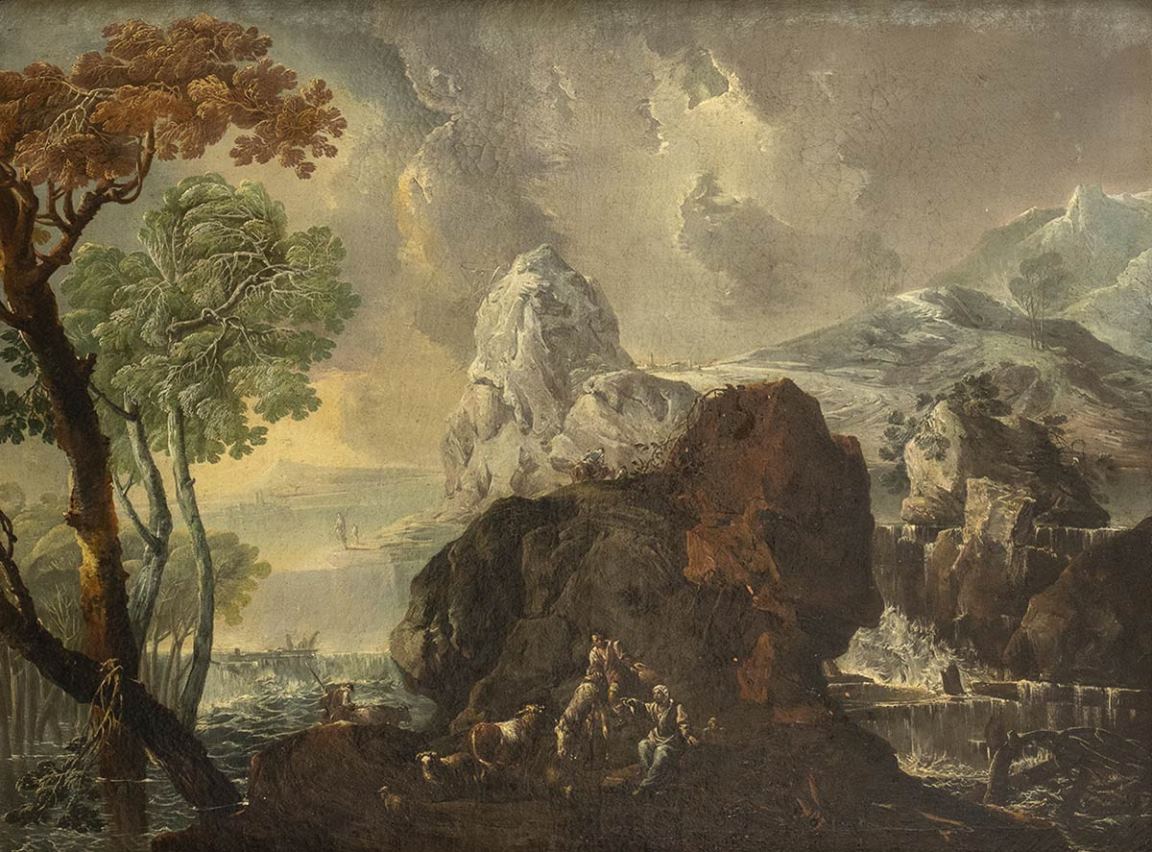
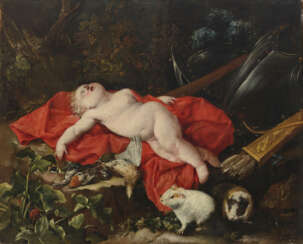





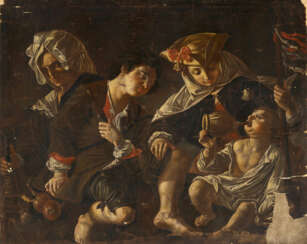

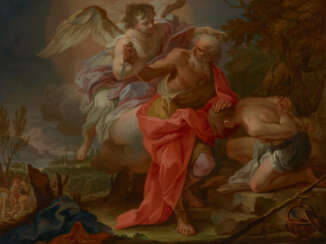



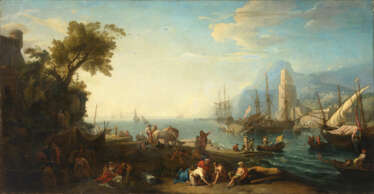

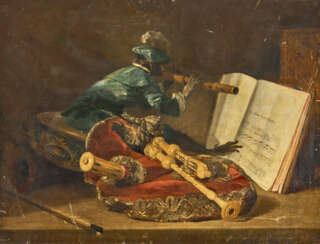

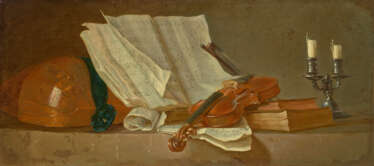

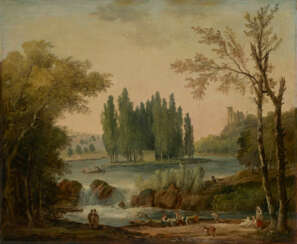

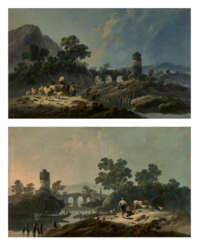



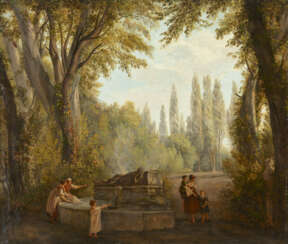

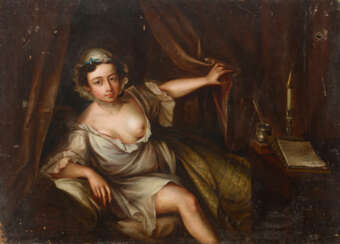

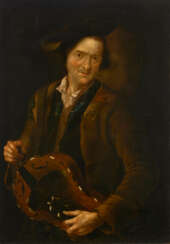



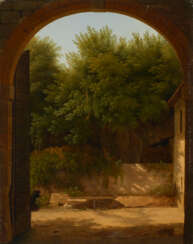

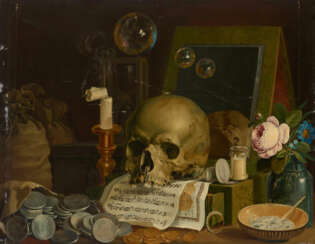

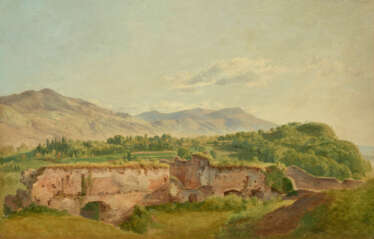



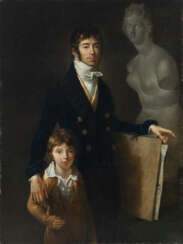



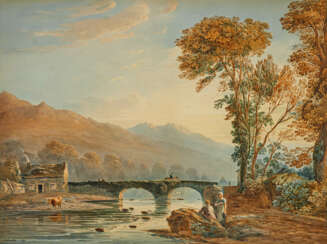

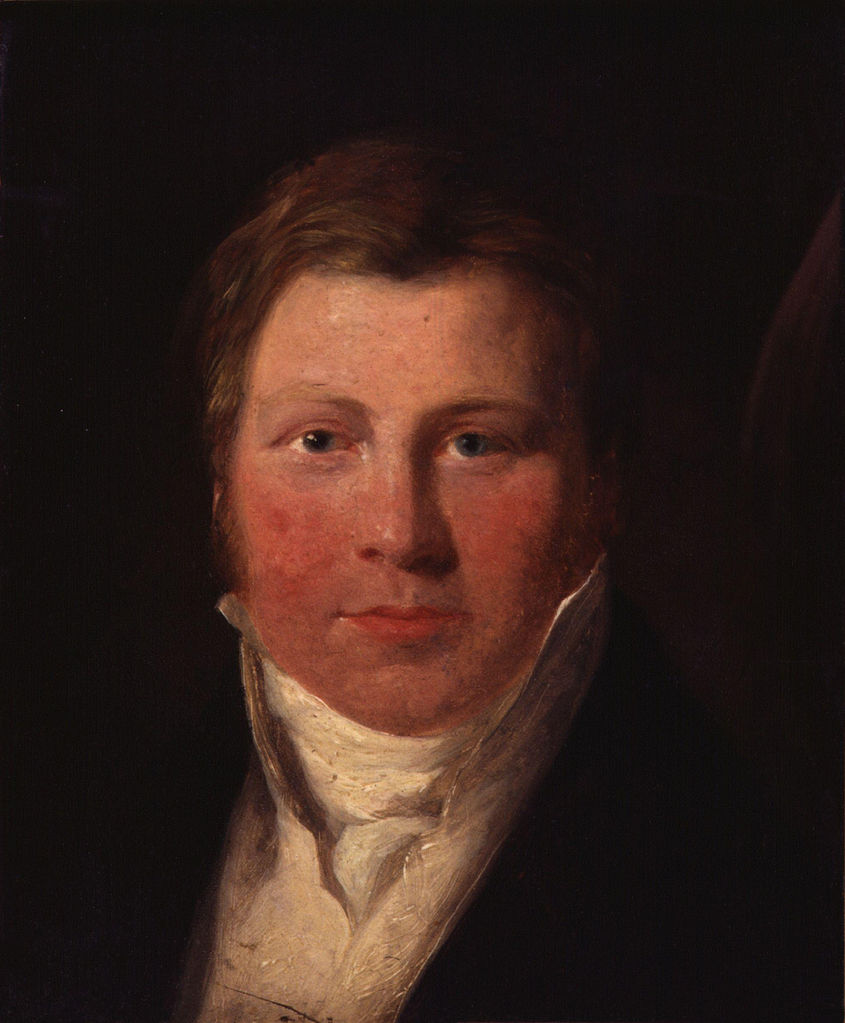
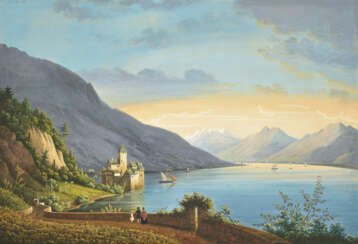



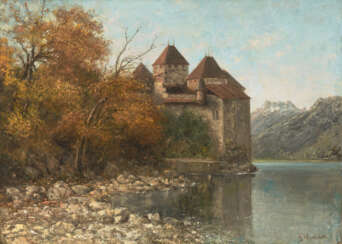

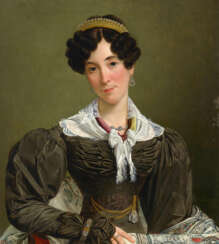

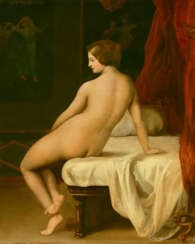





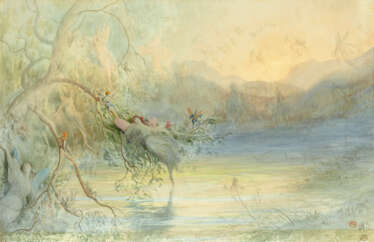

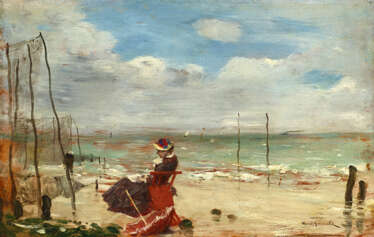

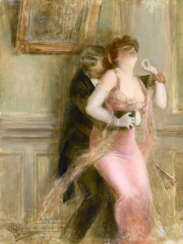

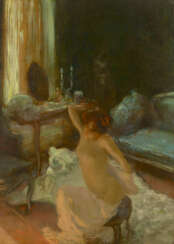

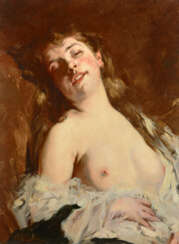

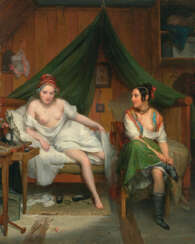

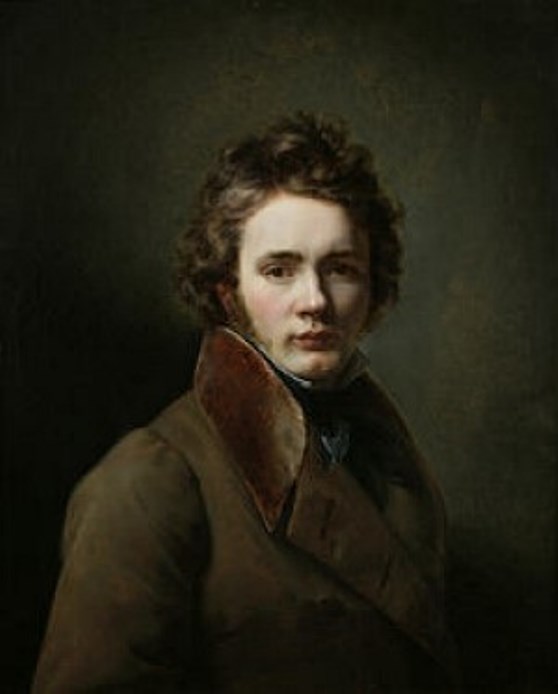
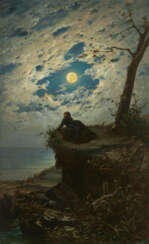







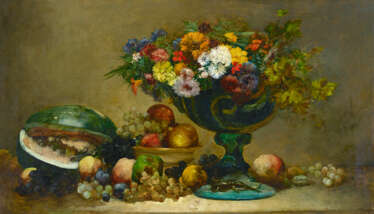



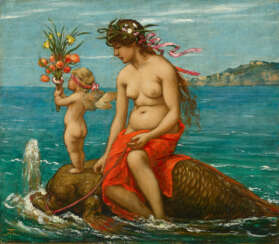



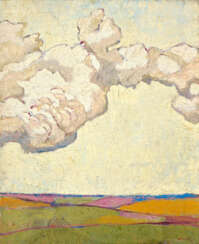

.jpg)